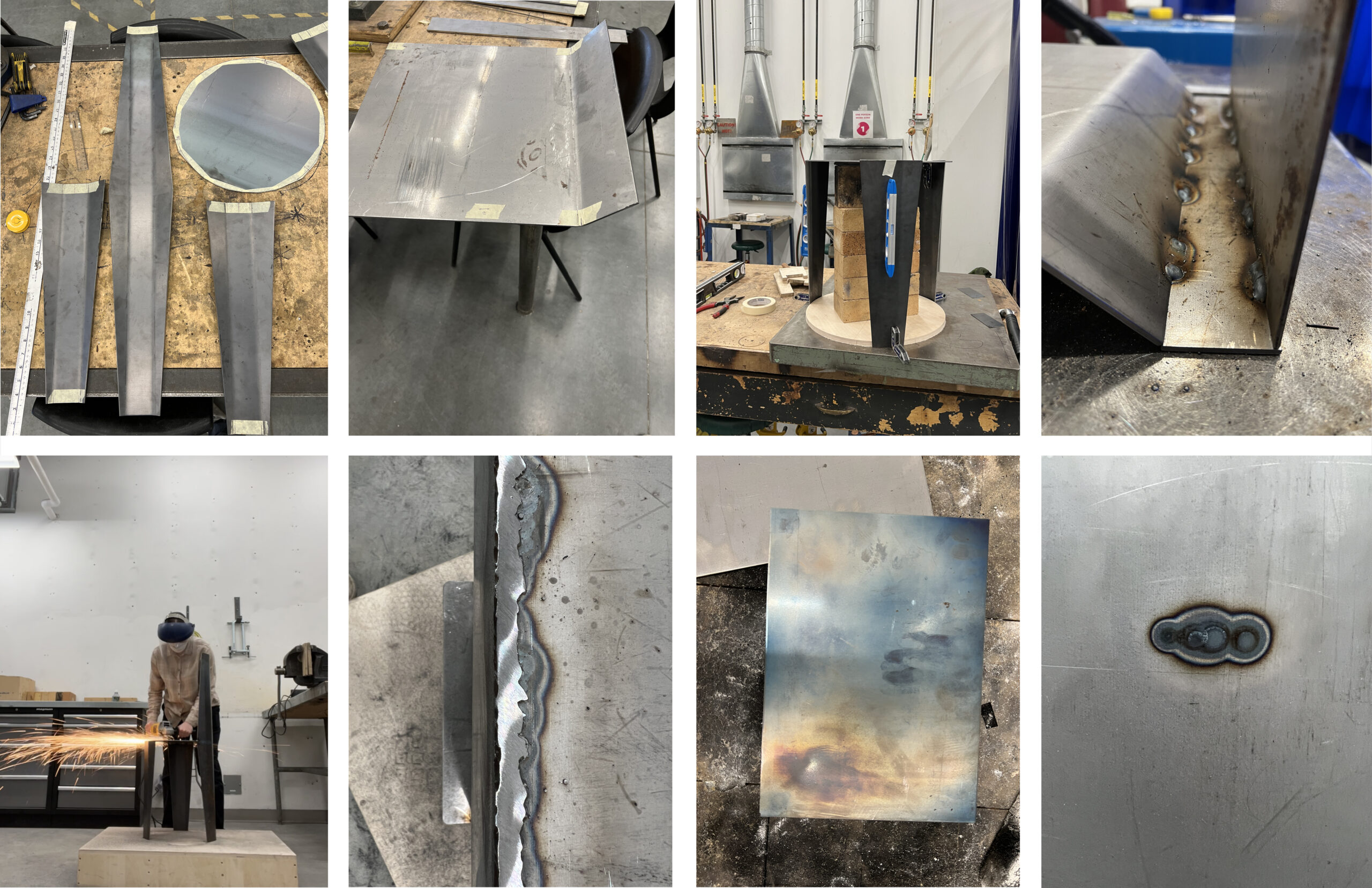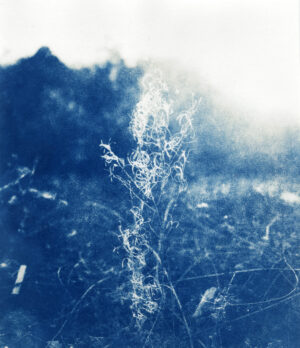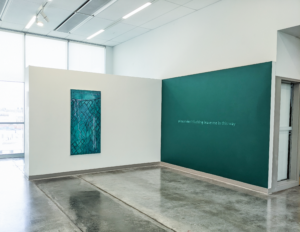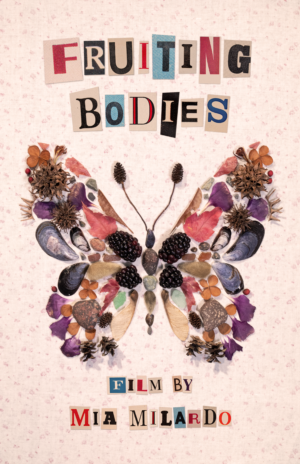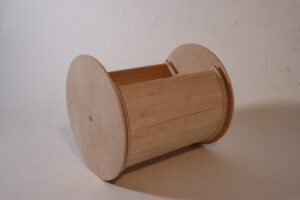FUTURE REMNANTS
Karla Erasmus
See it On Campus: Level 2
Visitor InfoFind my work on the second floor in the sculpture gallery on the East end of the building.
FUTURE REMNANTS by Karla Erasmus
Metal in relation to time.
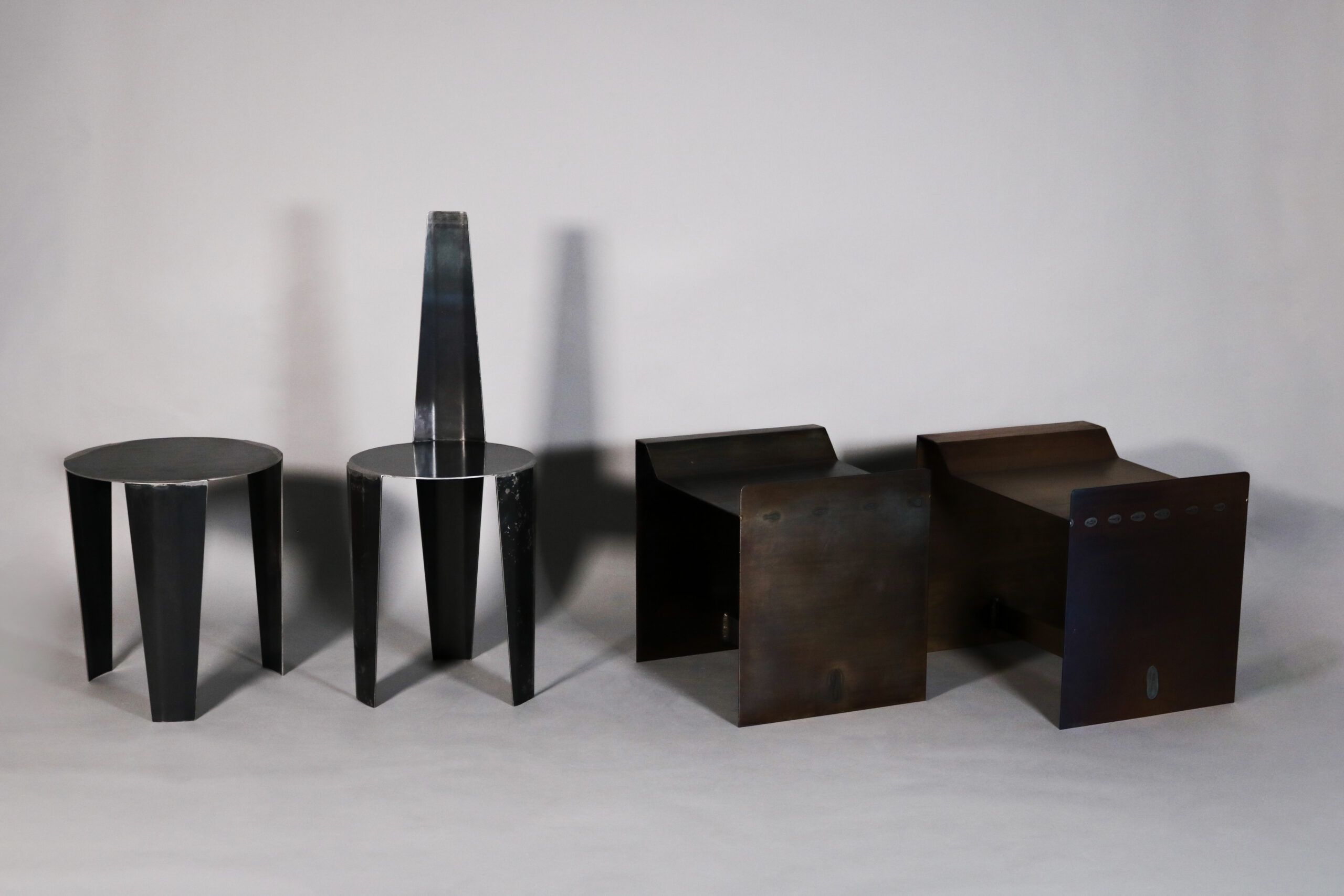
Future Remnants is a series of metal forms as an exploration of time. This project uses a familiar material, steel, in a different context than where it is most often seen, in order to talk through the temporalities we assign to certain materials. We put our faith in steel to hold up our buildings, bridges, and world but rarely do we acknowledge the material for what it is, remarkable. Born of stellar nucleosynthesis and deposited in the earth’s crust, metal spans across time like few other materials.
The forms are a celebration of metal in a more personal context; as furniture pieces that will likely exist long after their inception.
Each form is made out of 10 gauge hot rolled mild steel. Each form was cut out of a sheet, has at least one element that was bent to a degree, and was welded back into a new formation.
Form No. 1
The first form in metal is a simple construction consisting of a circular top surface and three bent and tapered legs welded to the circular surface. It stands 18″ tall and stretches 16″ diameter. Hard lines on the legs of the structure are contrasted with soft organic lines shining silver on the surface.
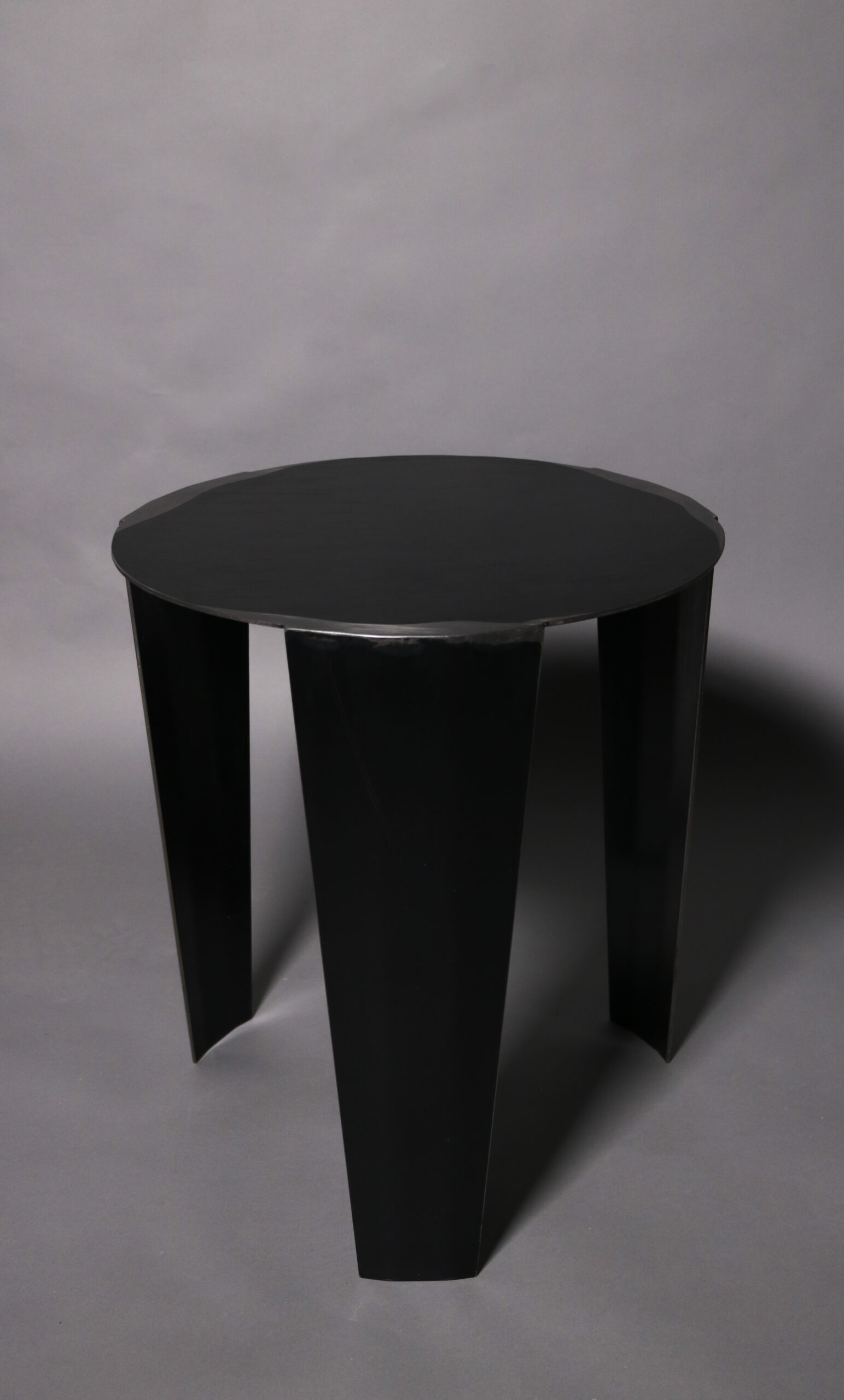
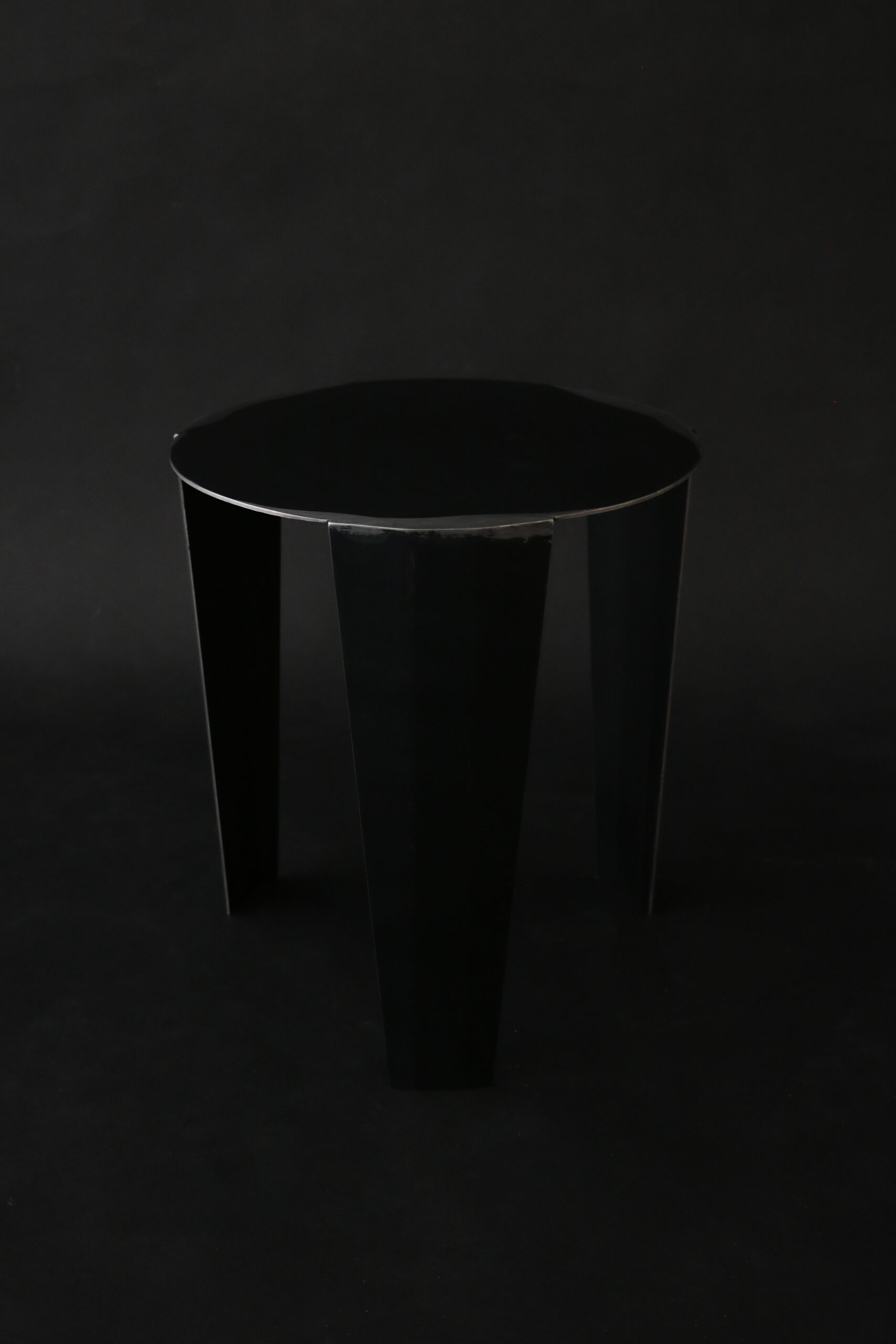
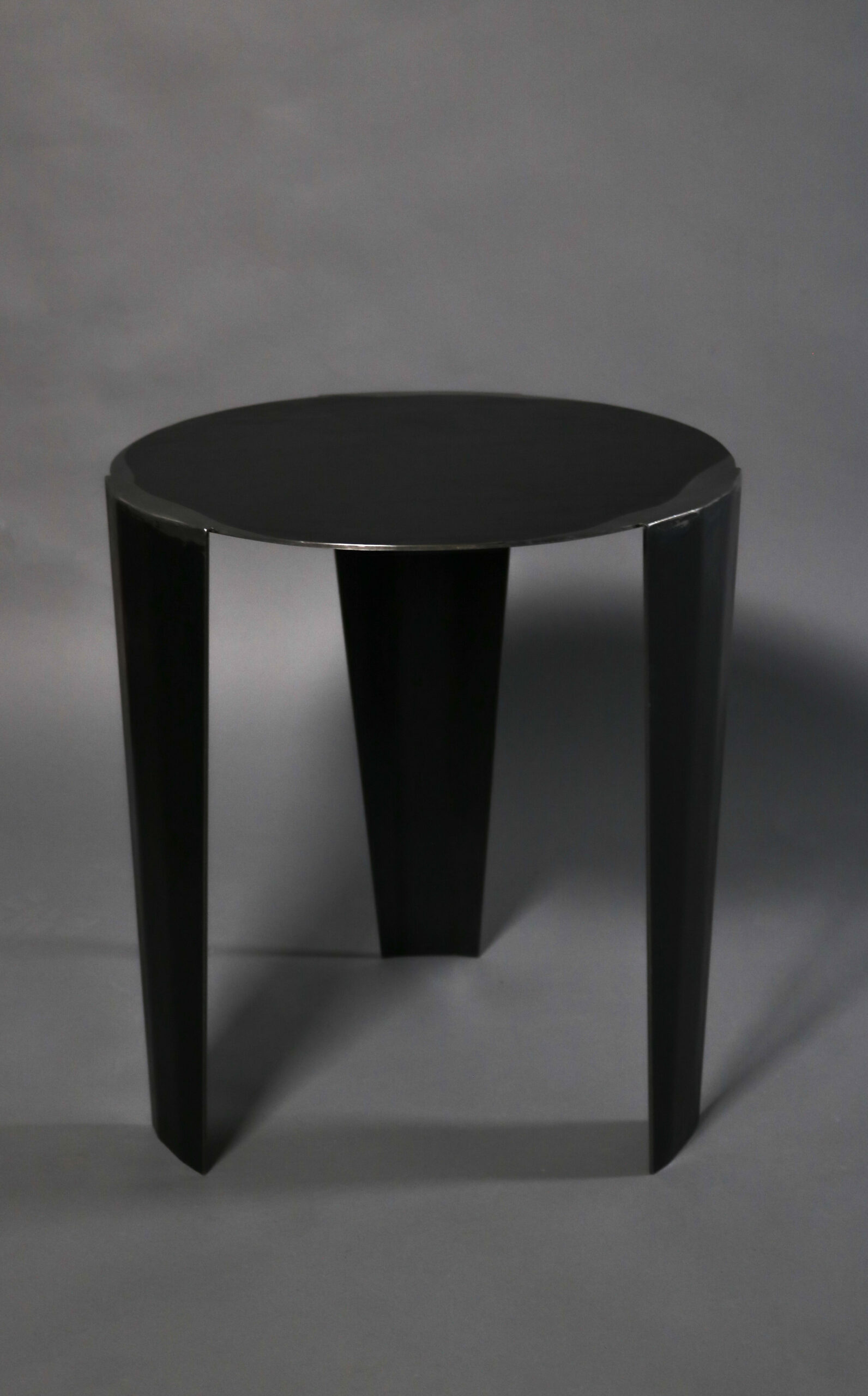
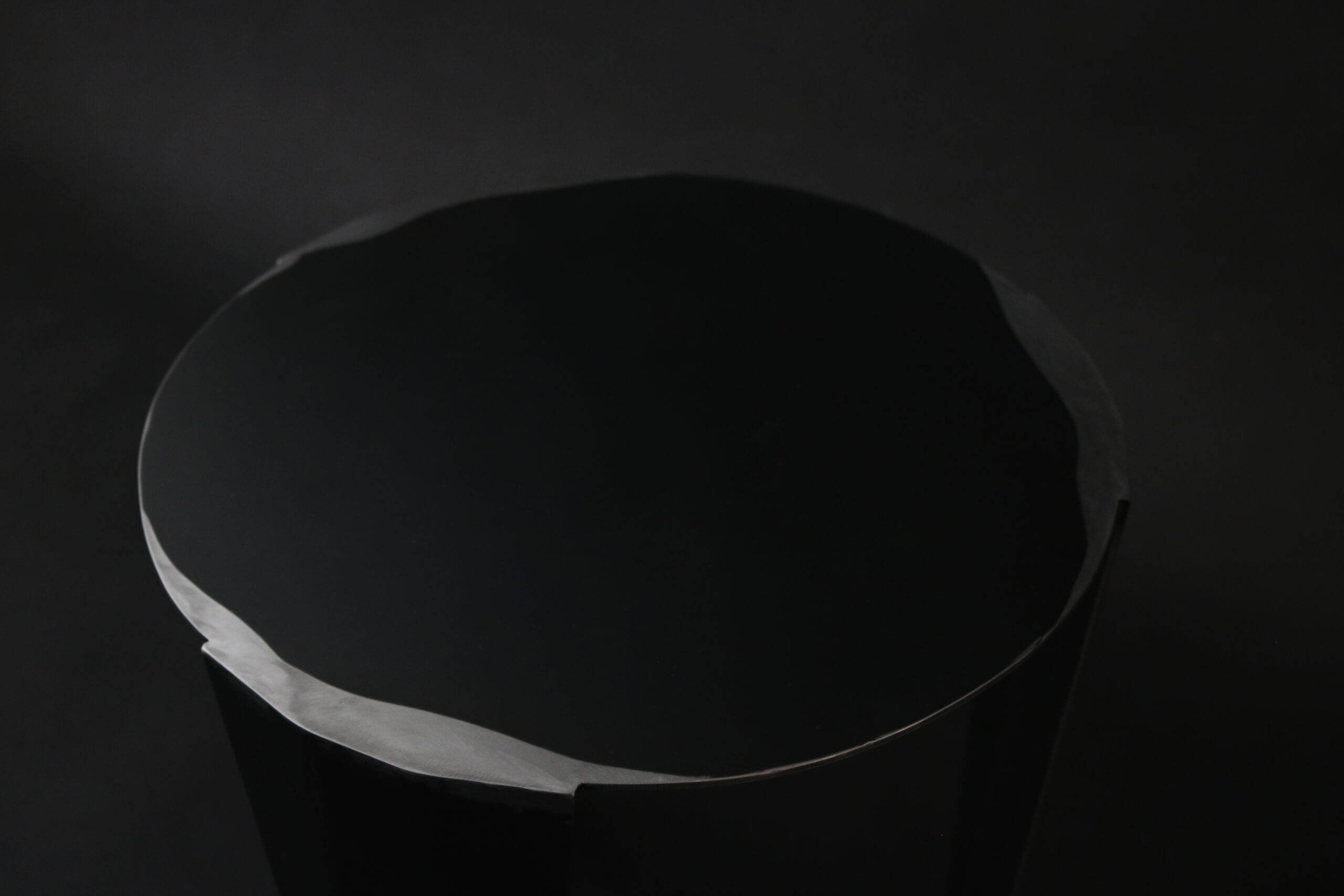
Form No. 2
The second form is a more rigid structure consisting of five pieces welding together. It stands 18″ tall, 16″ wide and 18″ long. An exciting thing happens to steel when enough heat is applied, it changes colour dramatically. The colours on the surfaces of this form came from applying heat with an acetylene torch for about two hours until the metal had absorbed enough heat to bring about the colour change.
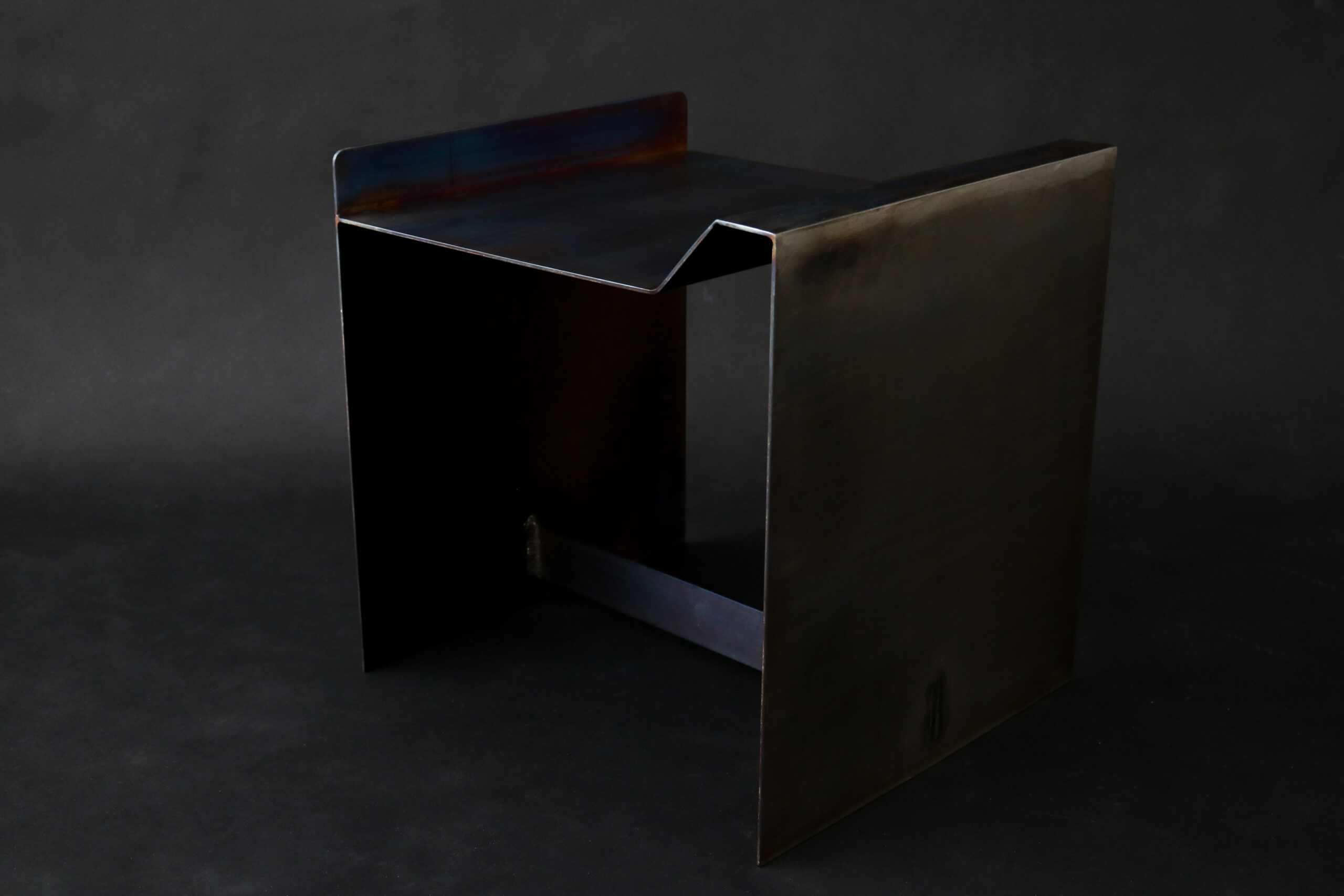
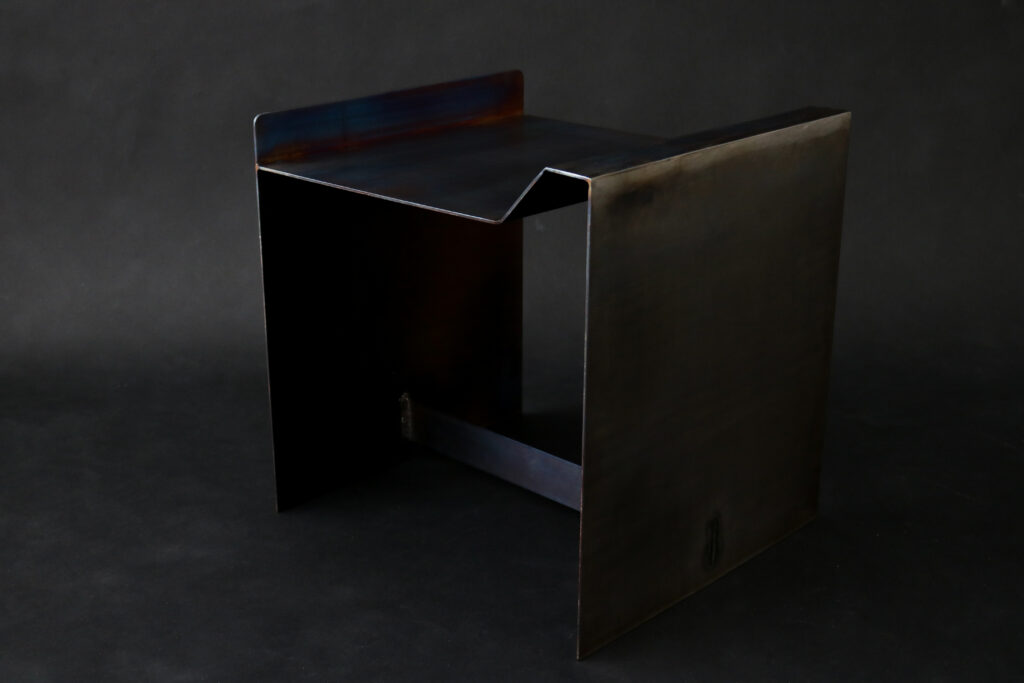
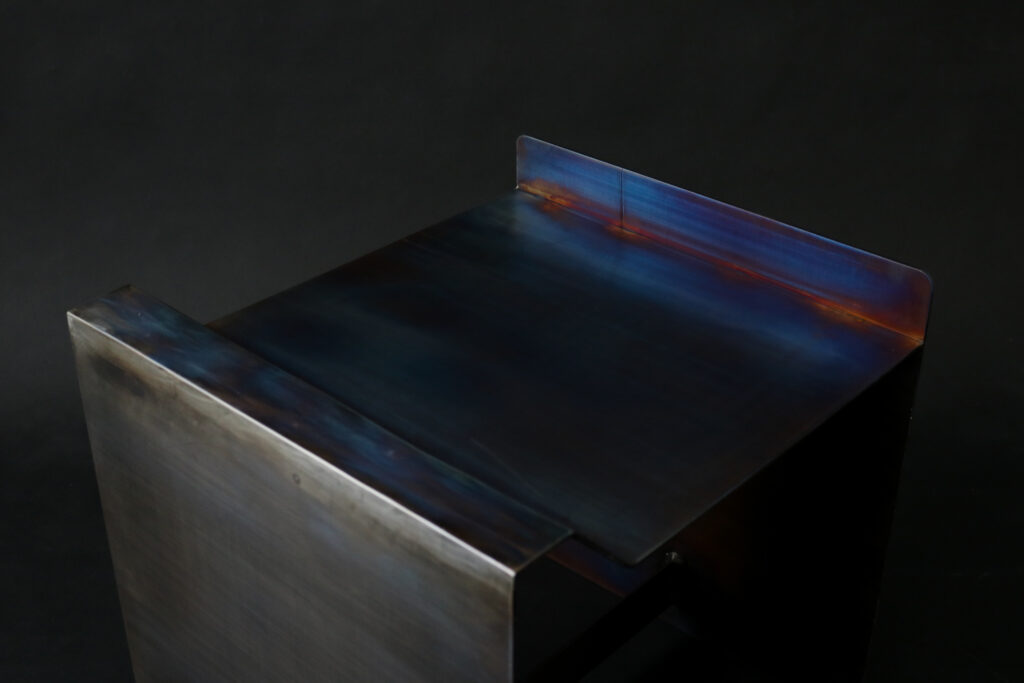
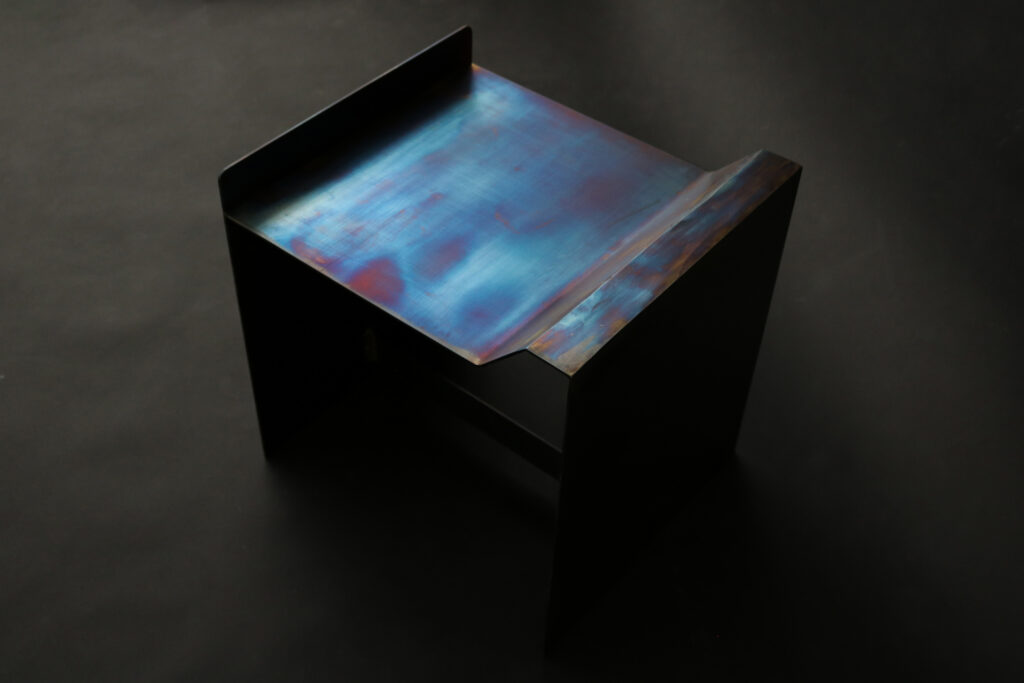
Form No. 3
The third form is a visual continuation of the first. It takes the structure and semantics of No. 1 and extends them into a new configuration. It is the one that breaks the conventions of the other forms in this series. It is 36″ at it’s tallest although the horizontal surface remains at 18″ tall but 14″ in diameter. The texture on the surface is from surface rust that had corroded through the the black coating from the processed steel but it results in a beautiful pattern that can never be precisely replicated.
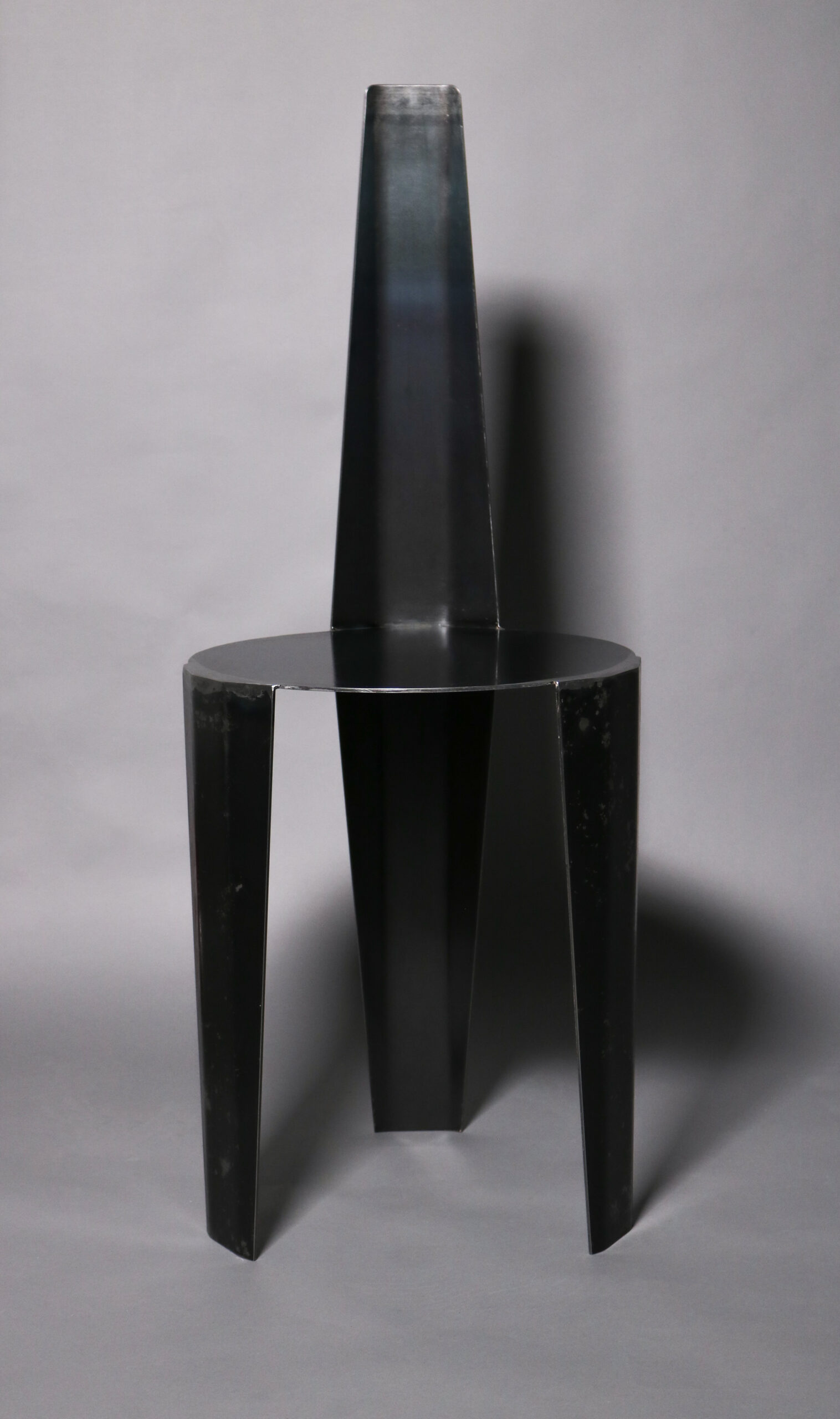
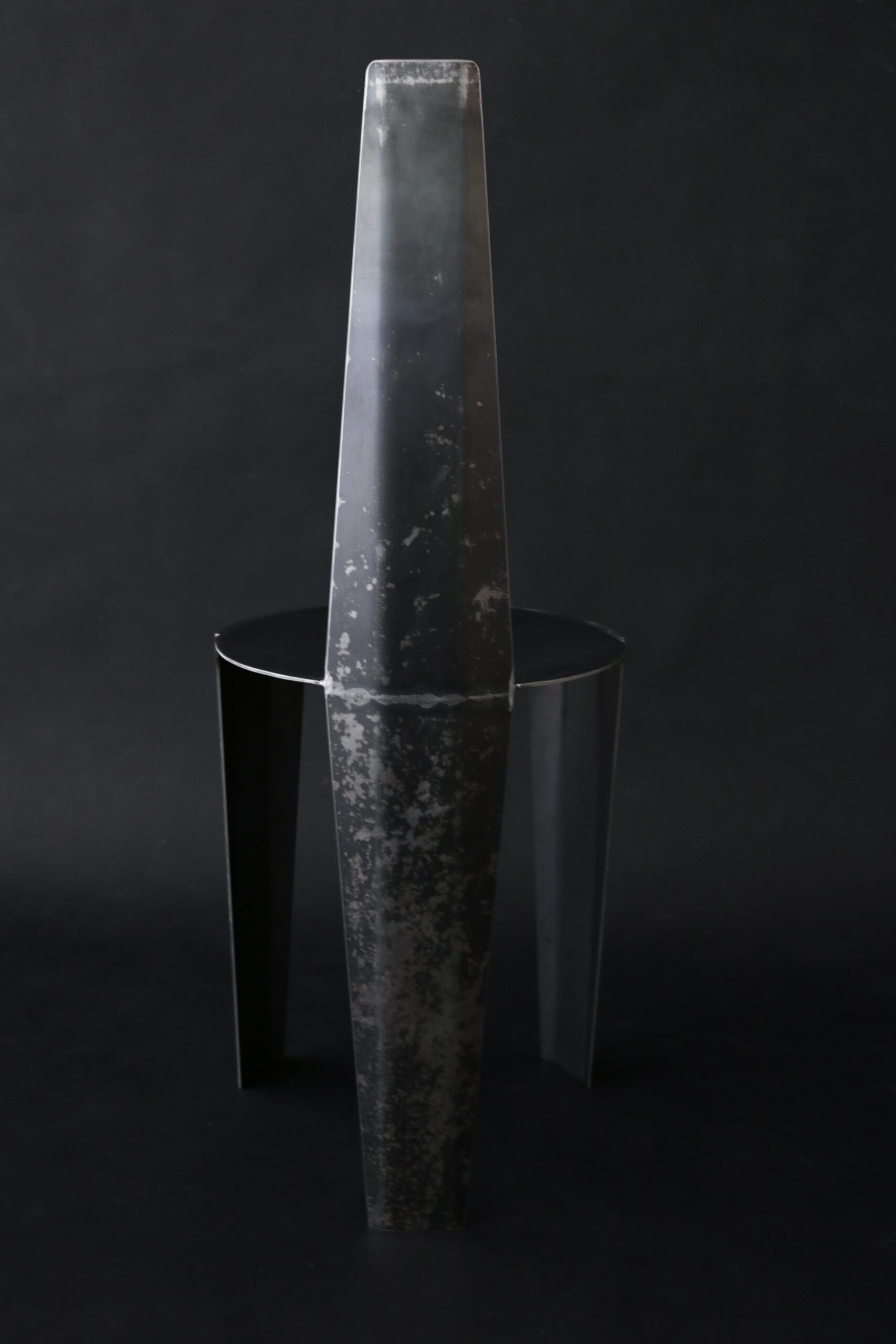
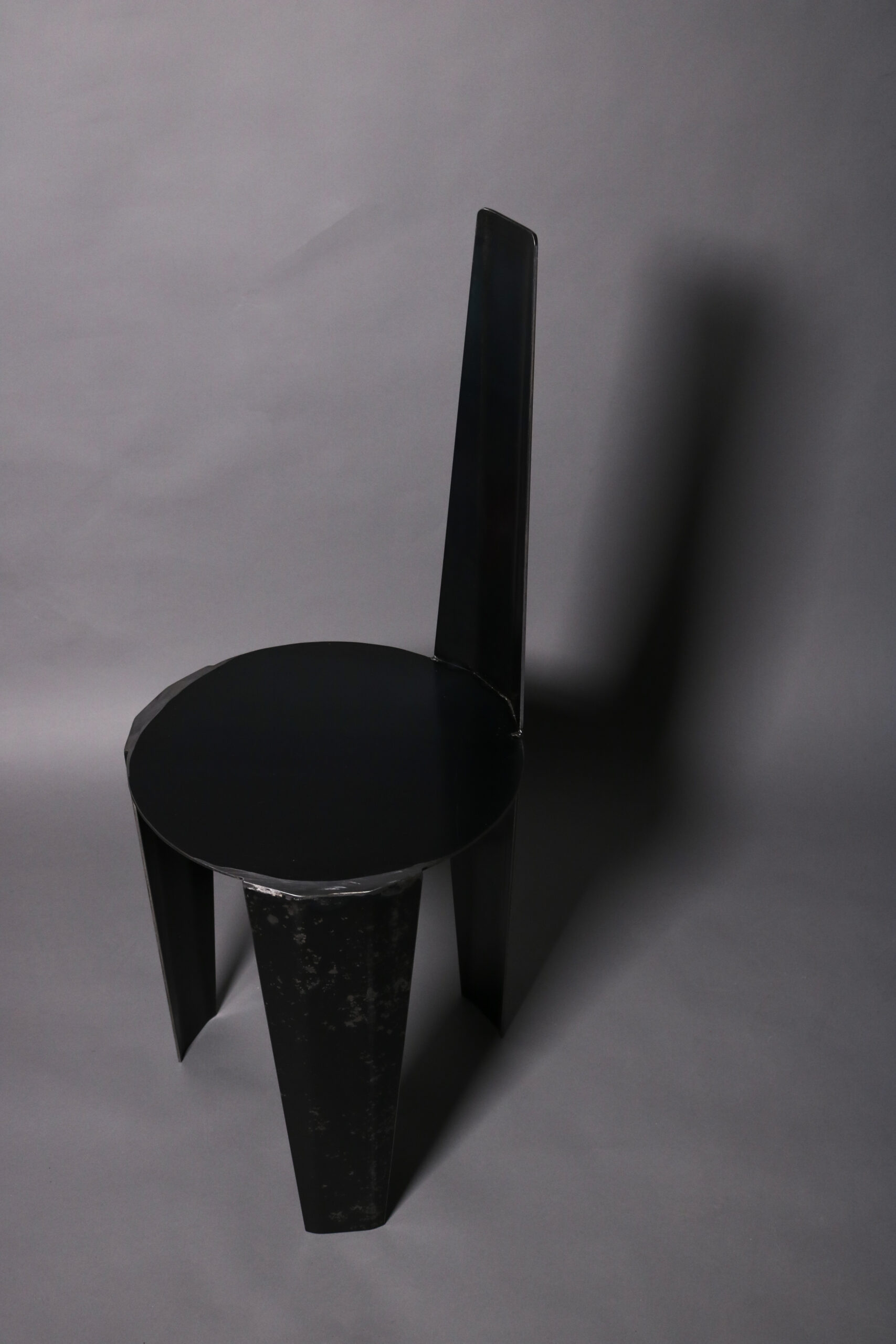
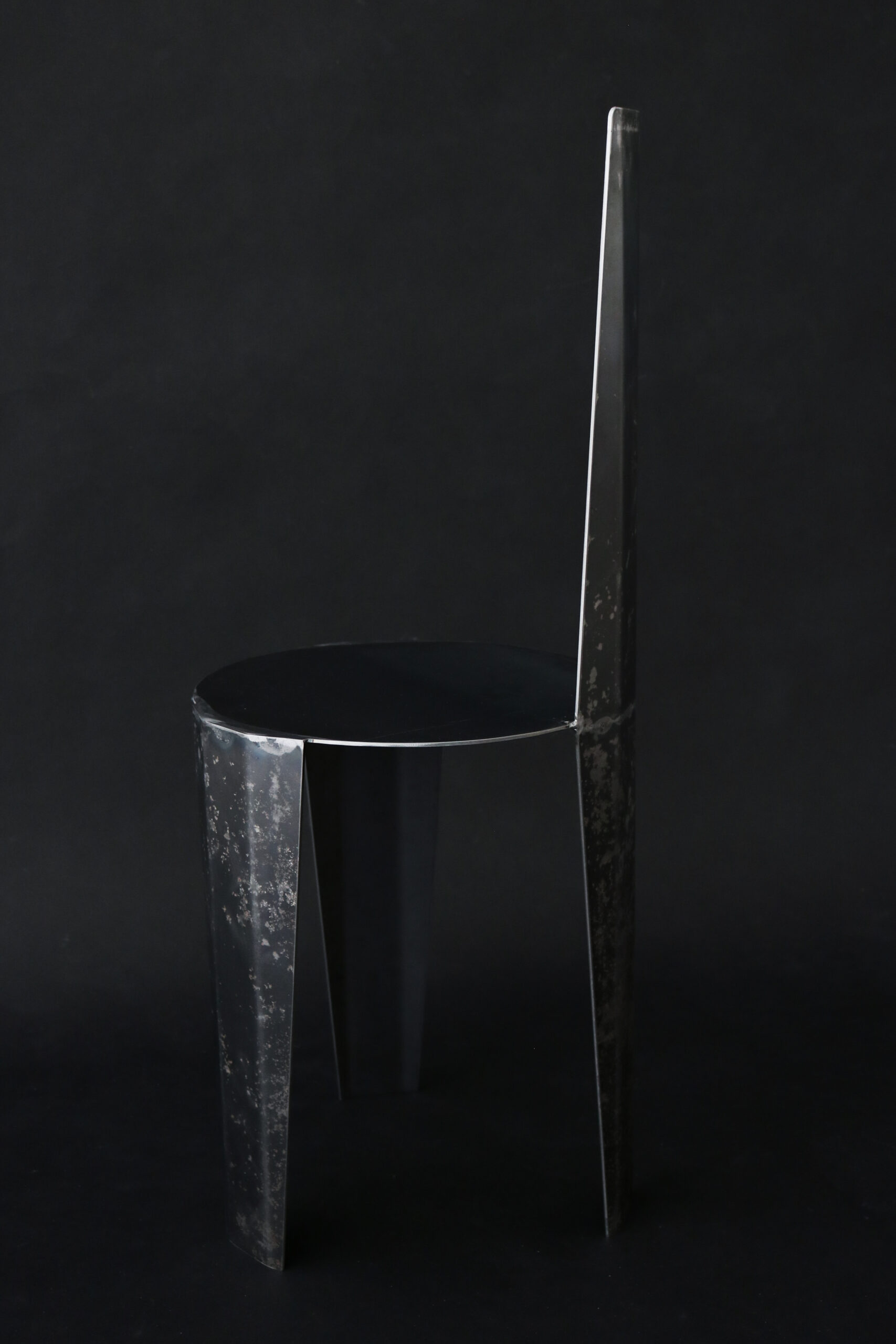
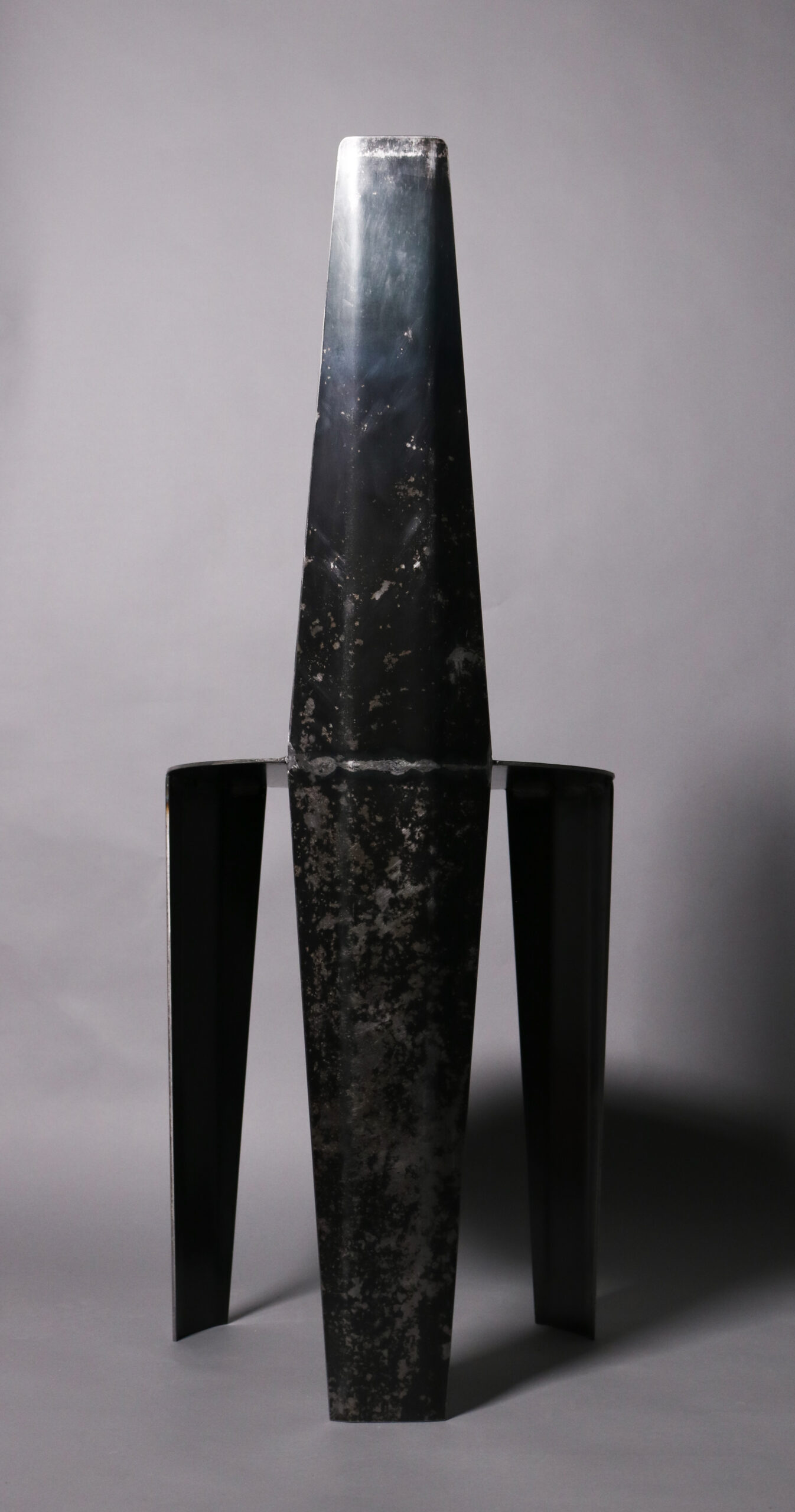
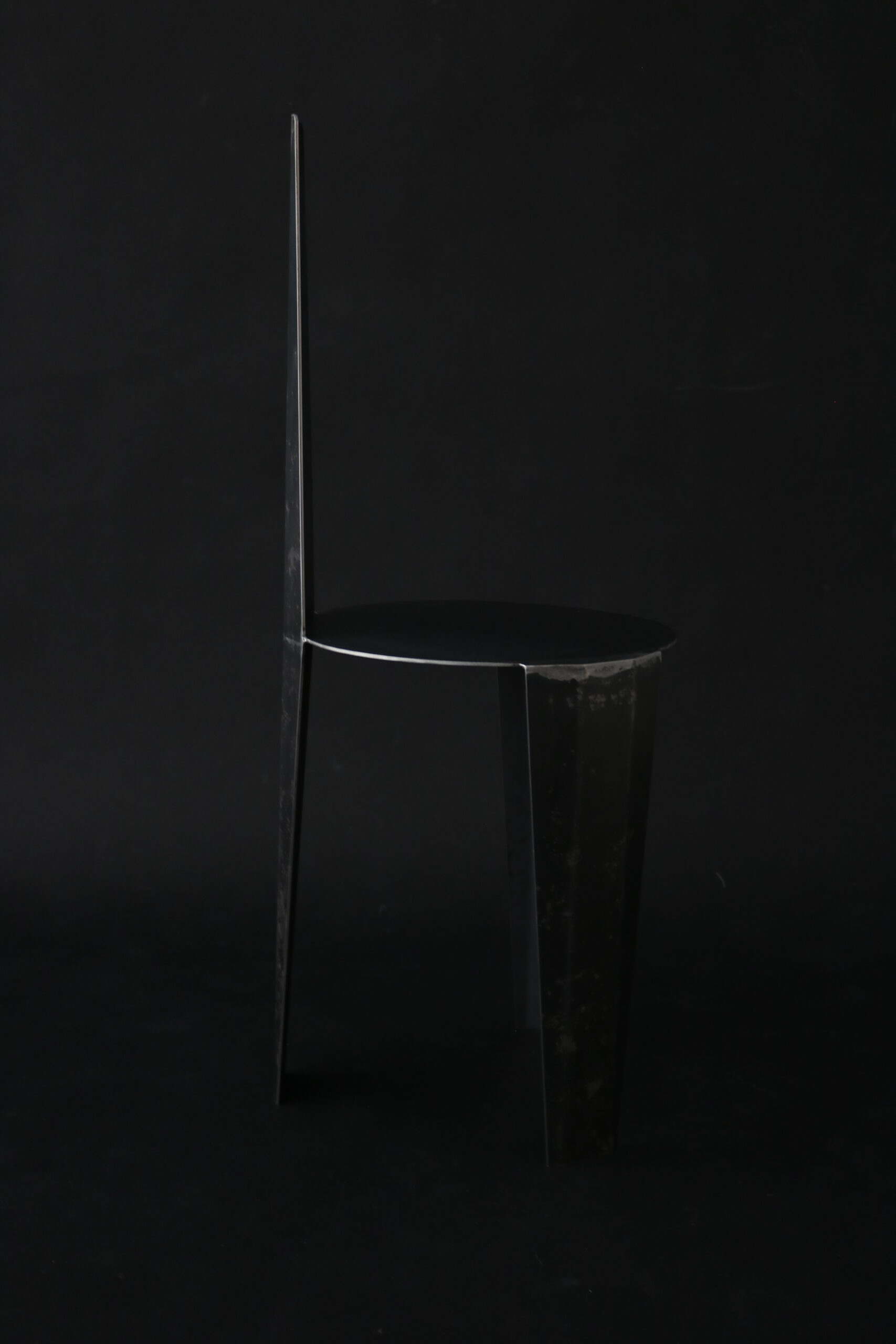
Form No. 4
The fourth and final form is a continuation of the second. The dimensions have increased and the methods have been refined. It is still five pieces welding together, but now it is 21″ long, still 18″ tall and 16″ wide. The colour treatment on this form follows the same ideas as for Form No. 2 but with a more even heating. The colour change of steel happens in stages, first the steel darkens the turns brown, then dark purple to dark blue to light blue and finally white. To draw out these colours evenly the form was put in a kiln usually used for ceramics and heated to 400° celsius for 30 min. The results were an unexpected bronze, gold colour over most of the piece that gradiates to orange and purple and blue in other areas. This final form is the culmination of everything learned from the first three, it is technically refined and visually stunning.
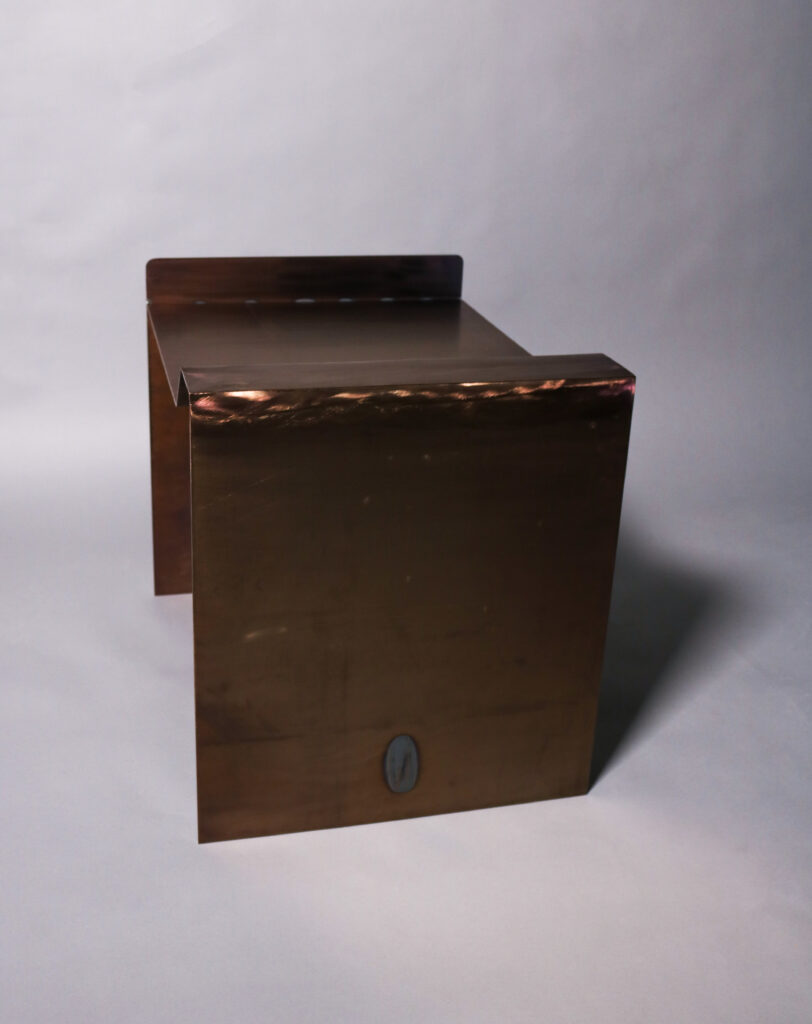
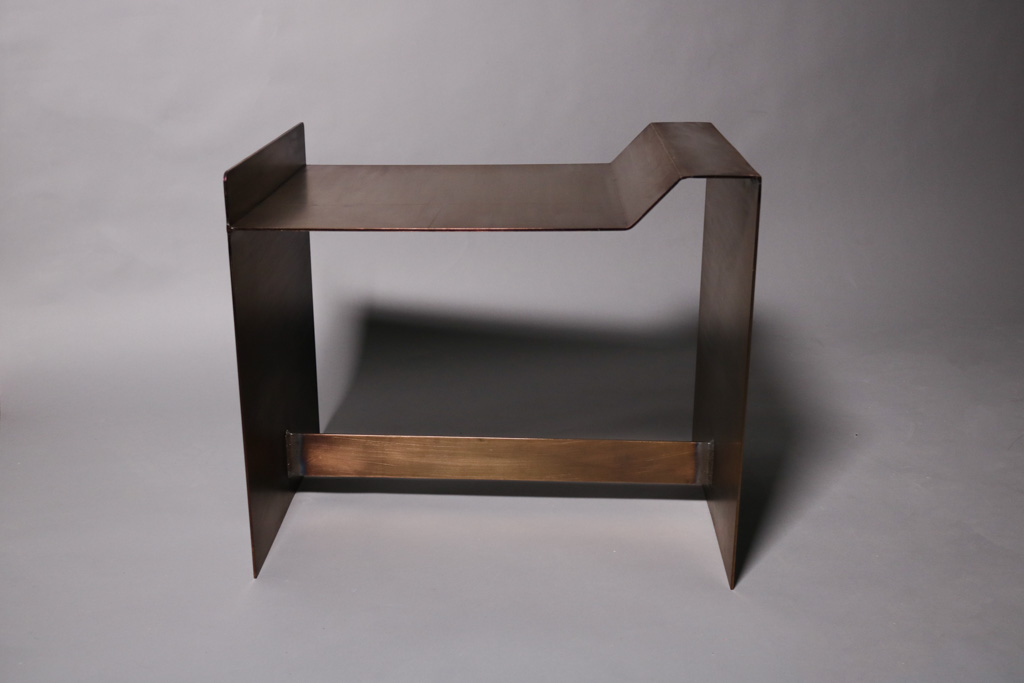
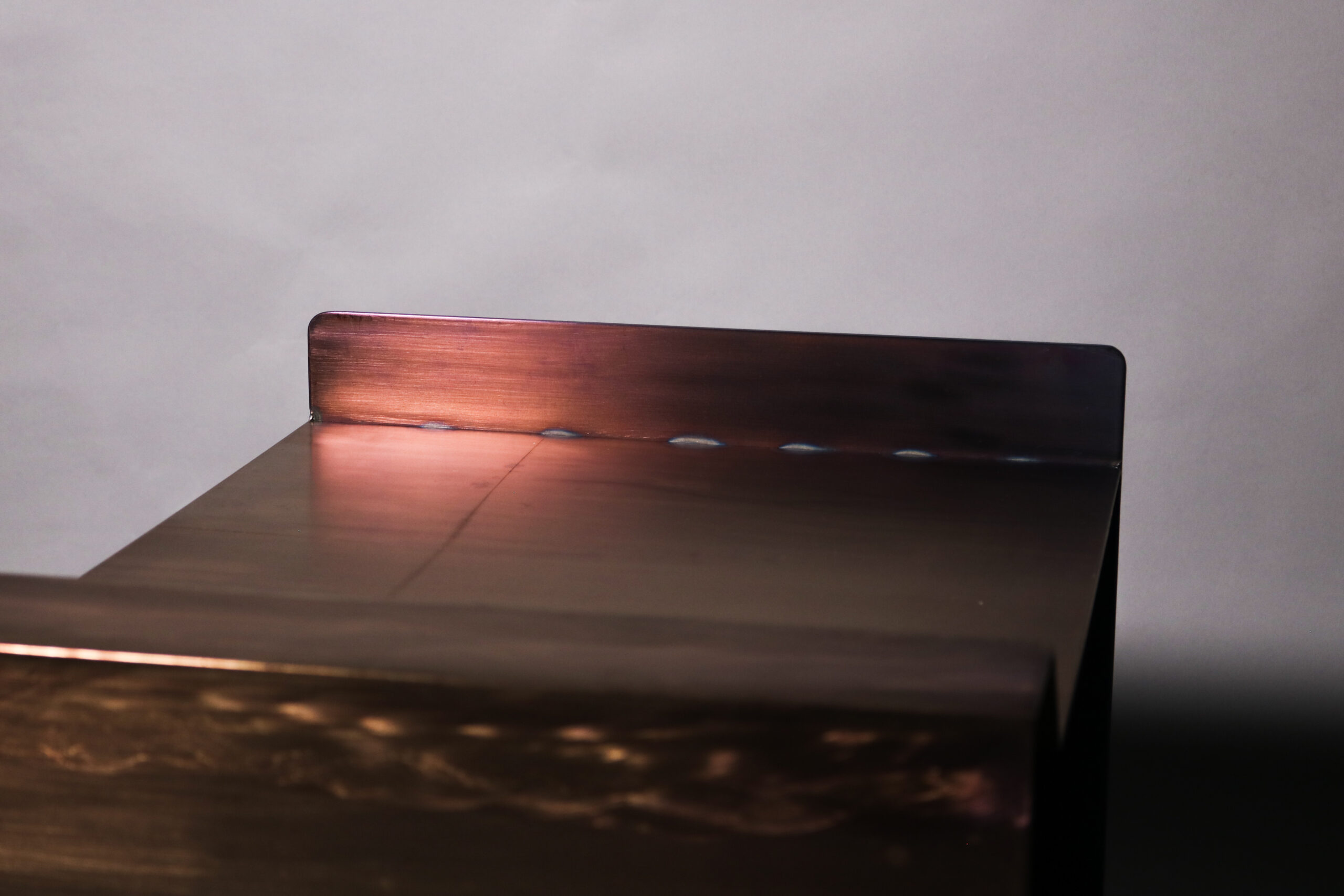
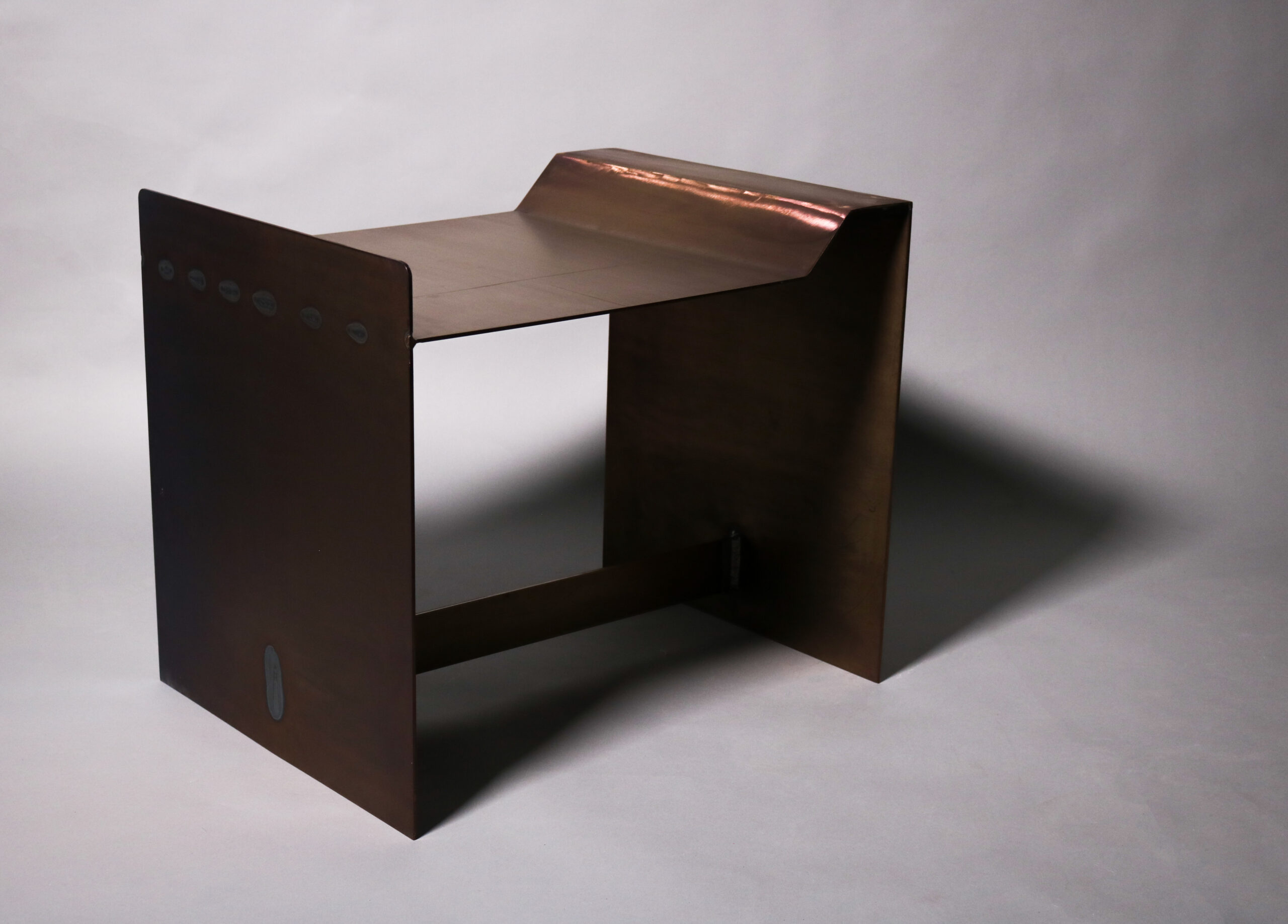
Gallery of Forms
Forms in relation to each other, photographed in series and side by side.
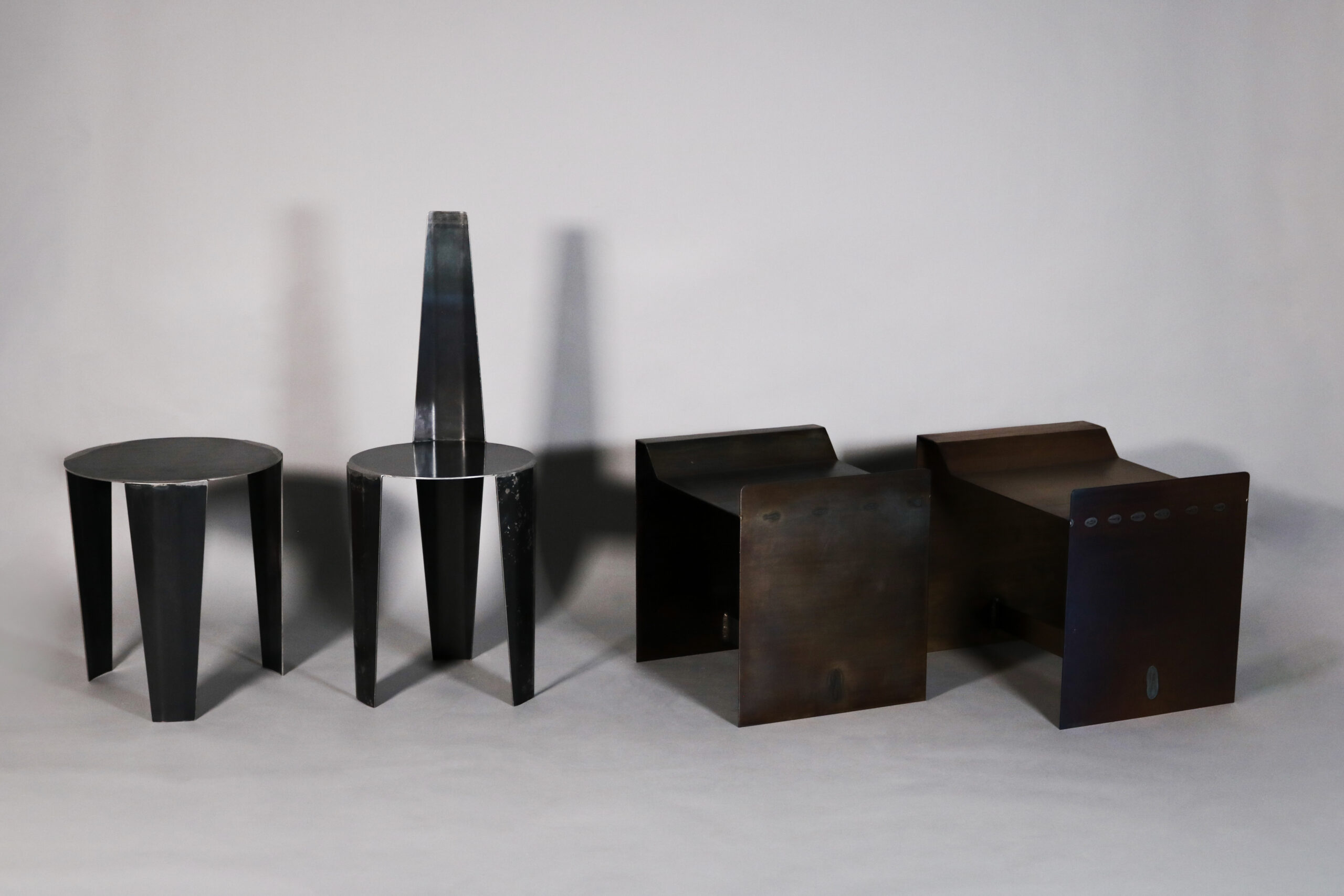
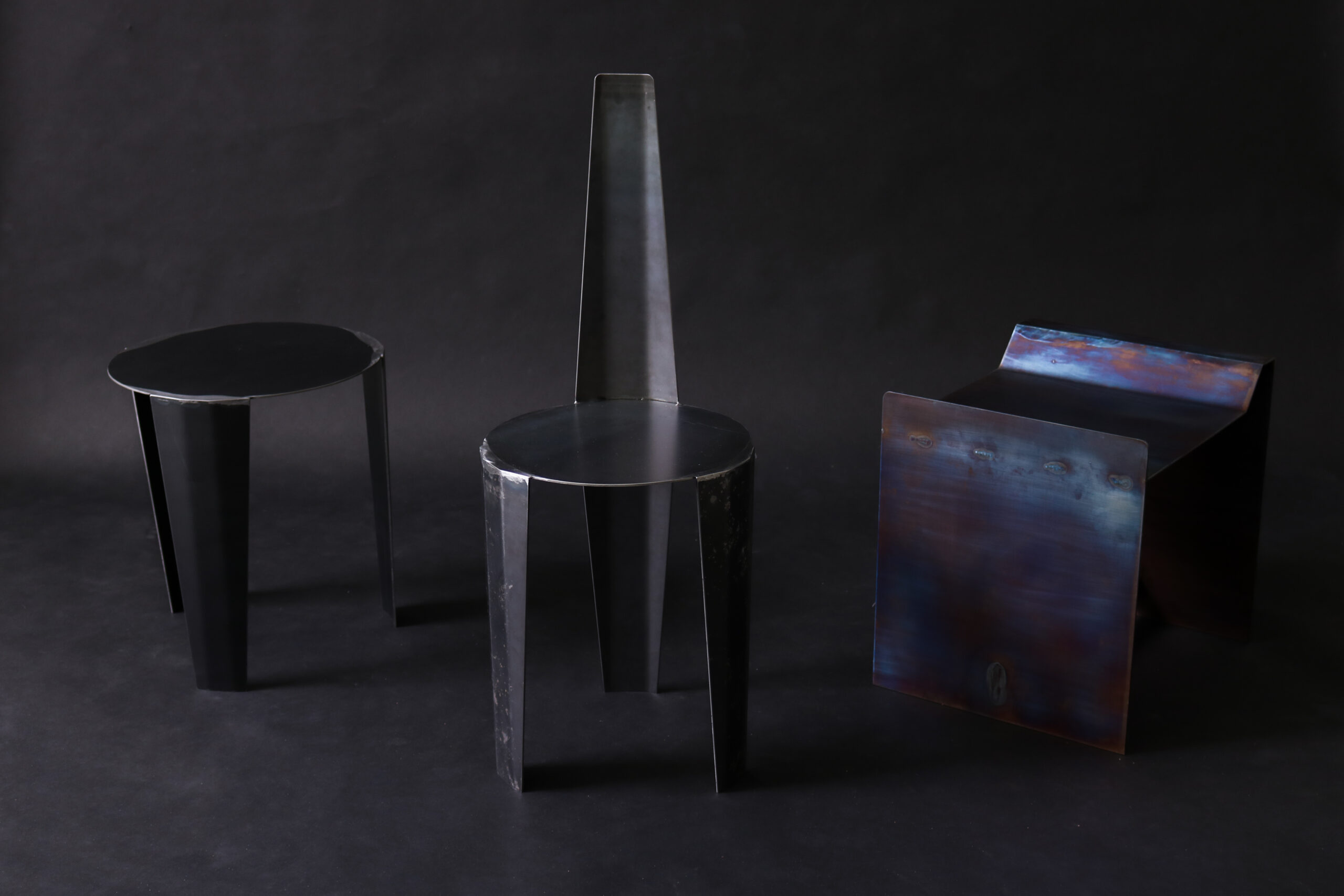
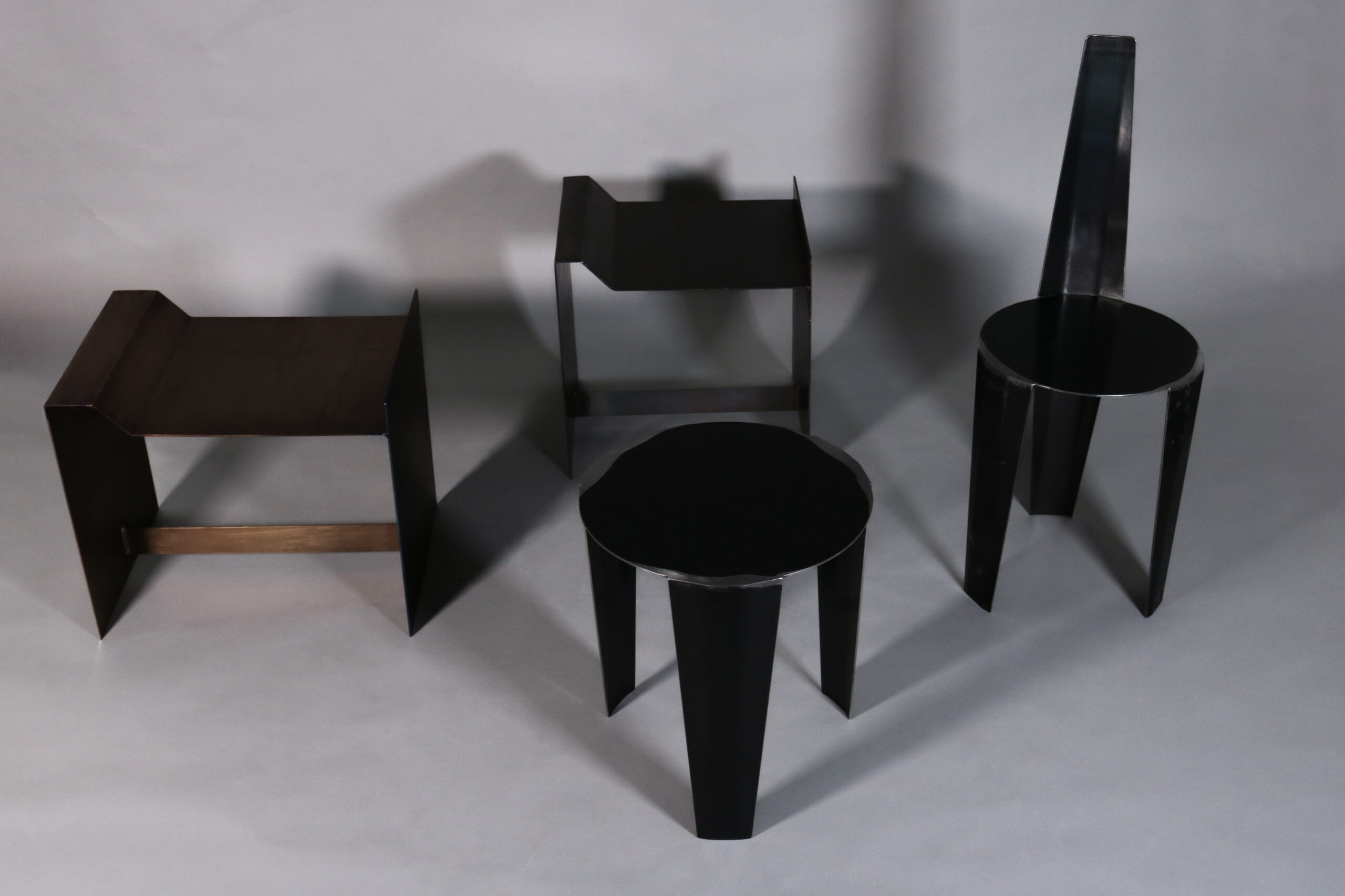
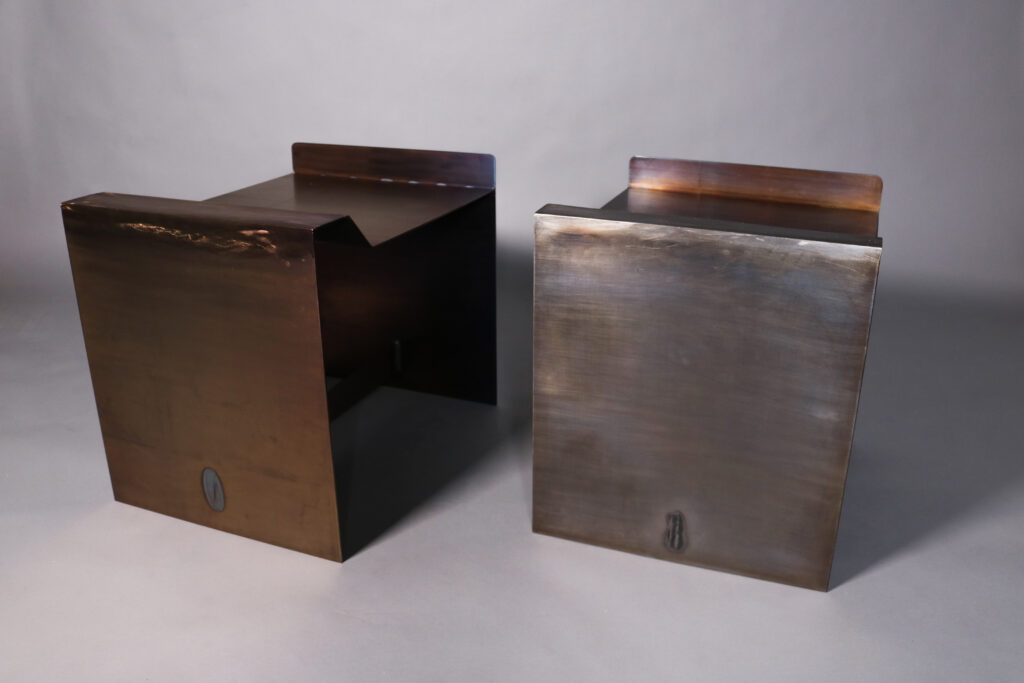
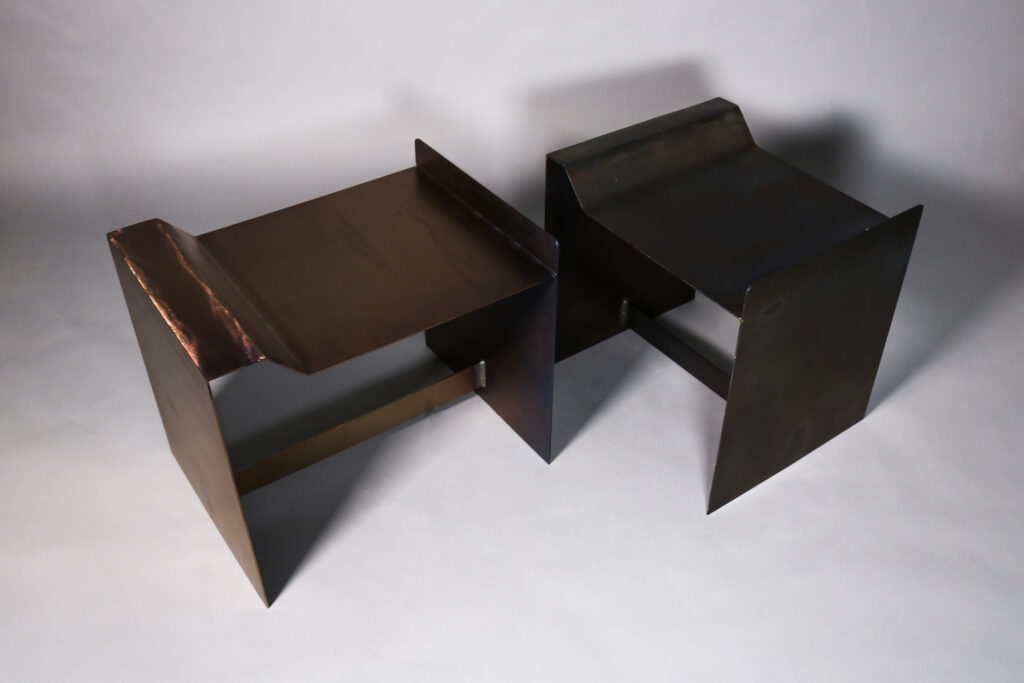
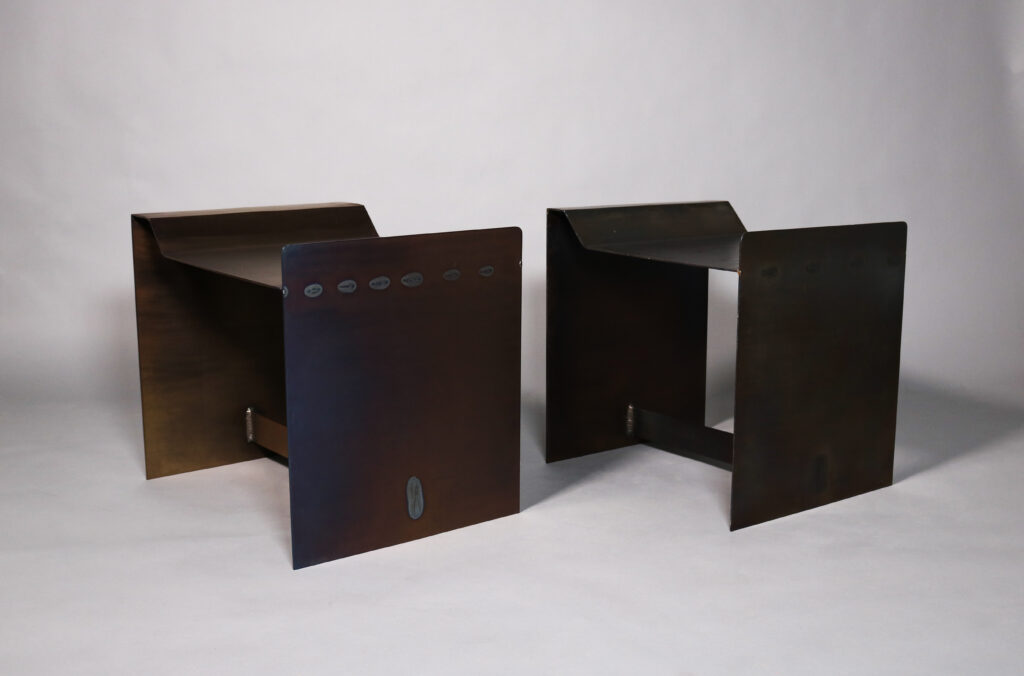
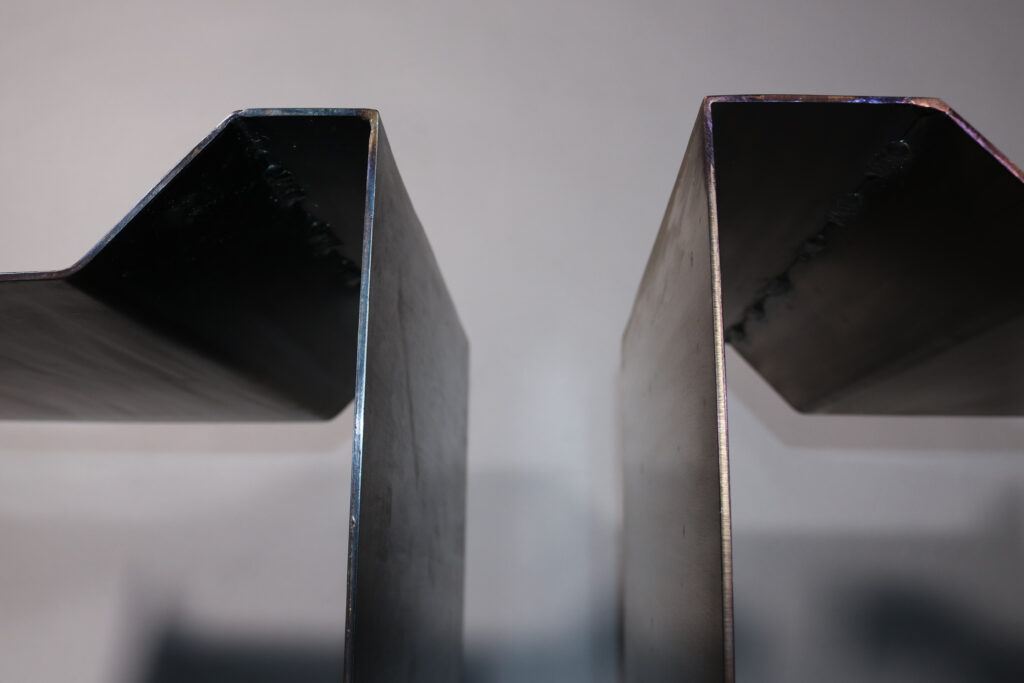
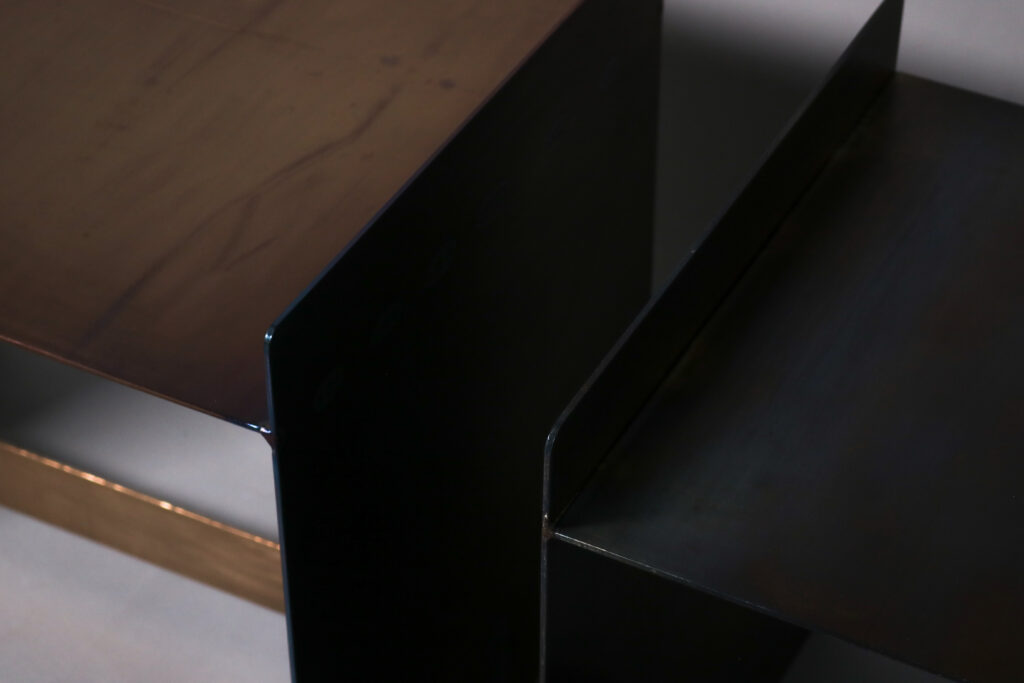
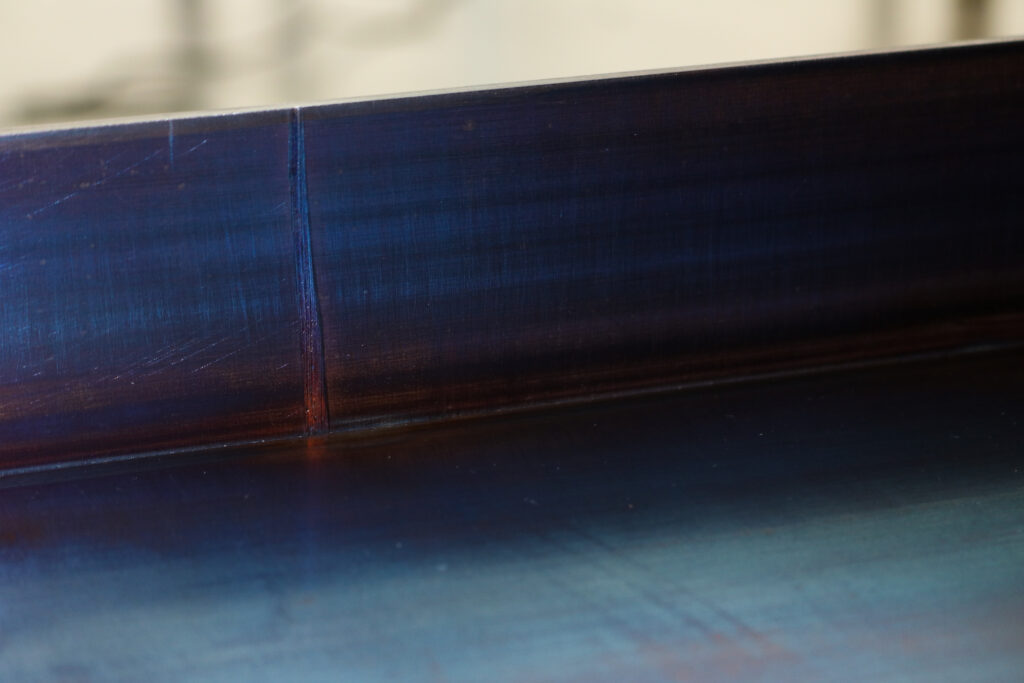
Celebration of Details / Material Imperfections
Metal is no doubt durable but it is not invincible, even steel scratches and dents and will eventually, hundreds of years from now, break down and return to their natural elements. Due to the nature of steel that I used, hot rolled mild steel, which is less processed than cold rolled steel, some of the sheet had deep scratches in places that instead of hiding or removing through heavy sanding, I decided to embrace within the surfaces of the forms. Another imperfection came in the form of surface rust on the circular forms; on form No. 1 I was able to remove all of it with sand paper without removing the black coating which is a result of the processing of steel. But for the third form the rust had eaten through that coating to the silvery underside producing a pattern impossible to replicate but with a beautiful texture. Other interesting areas are where the temperature of welding showed through to the other side of the surface of where it was welded.
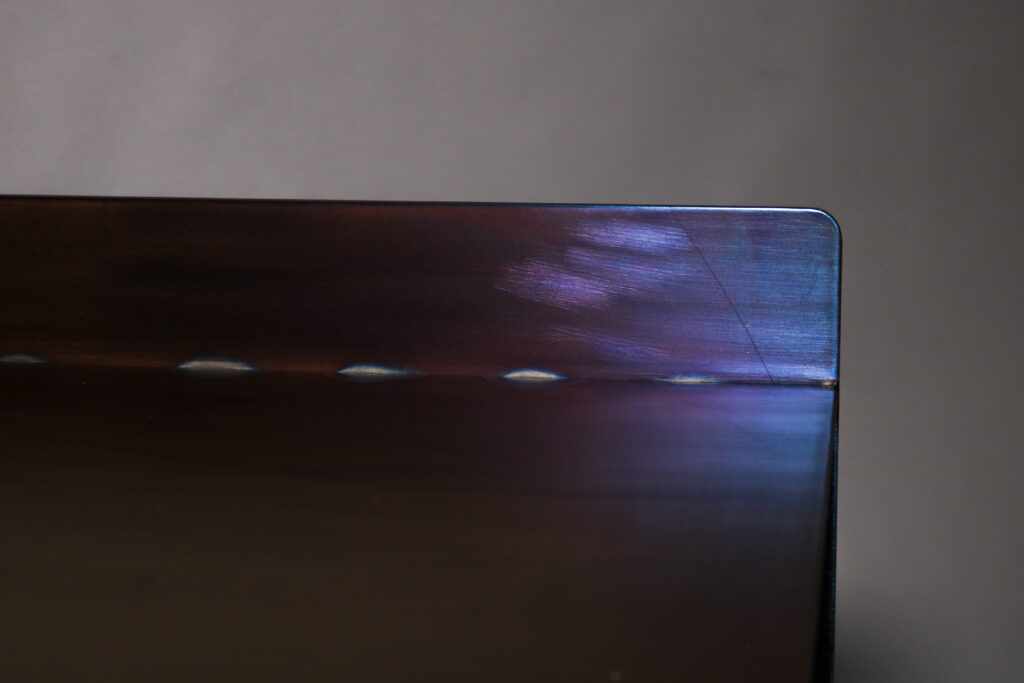
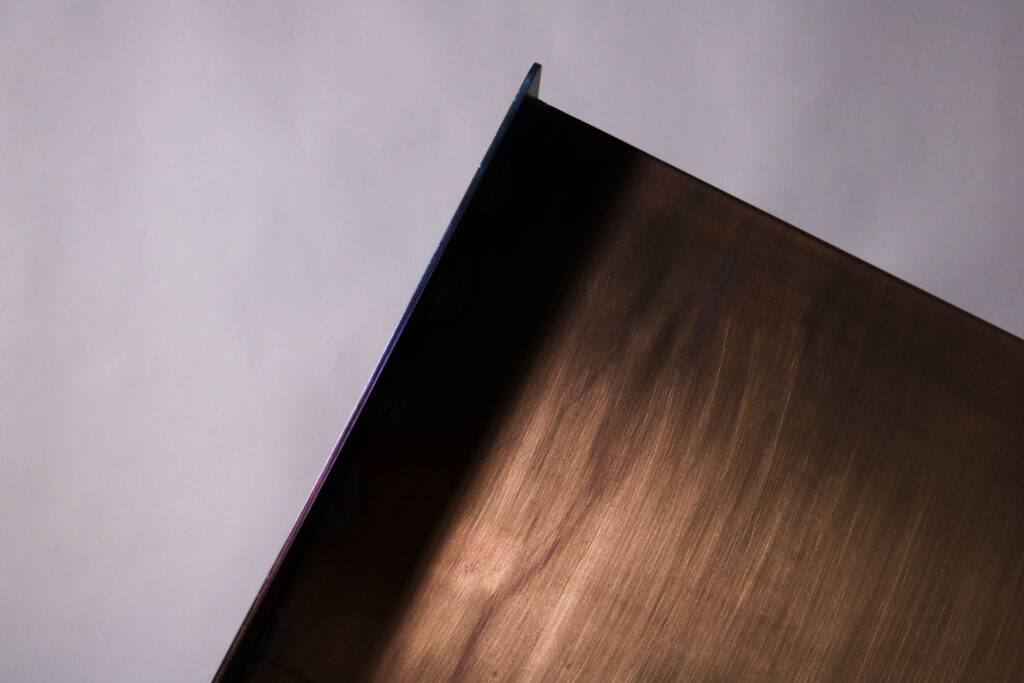
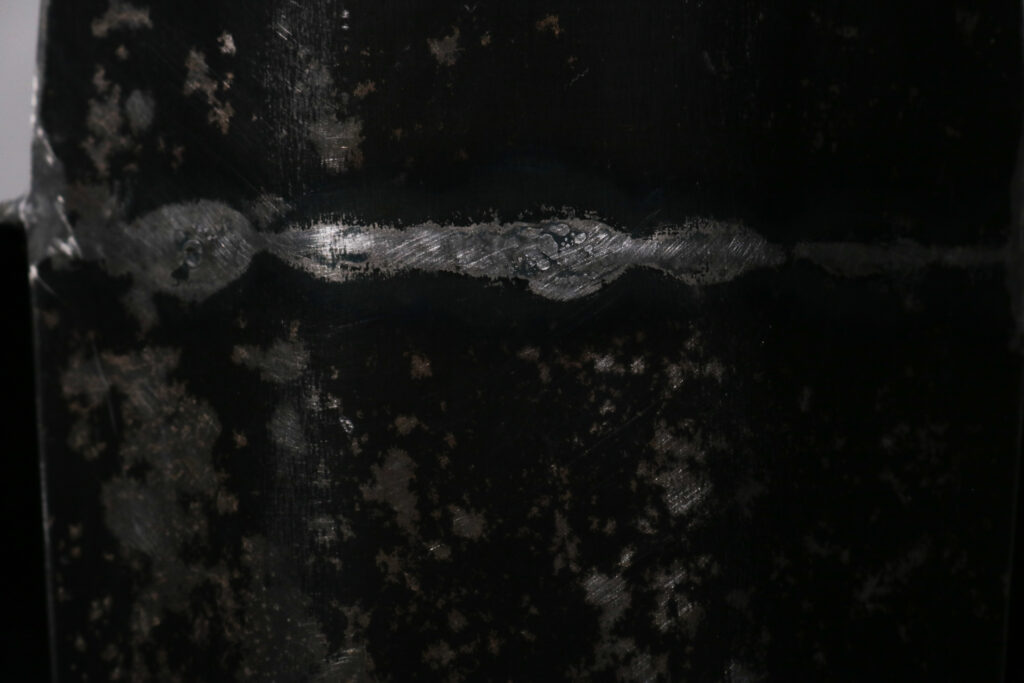
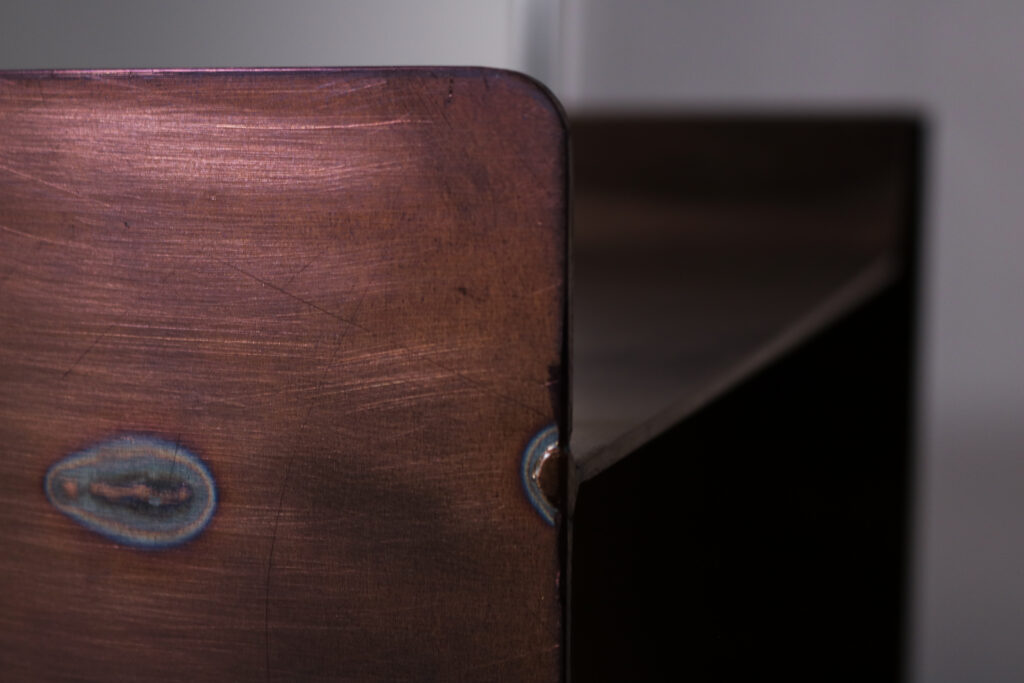
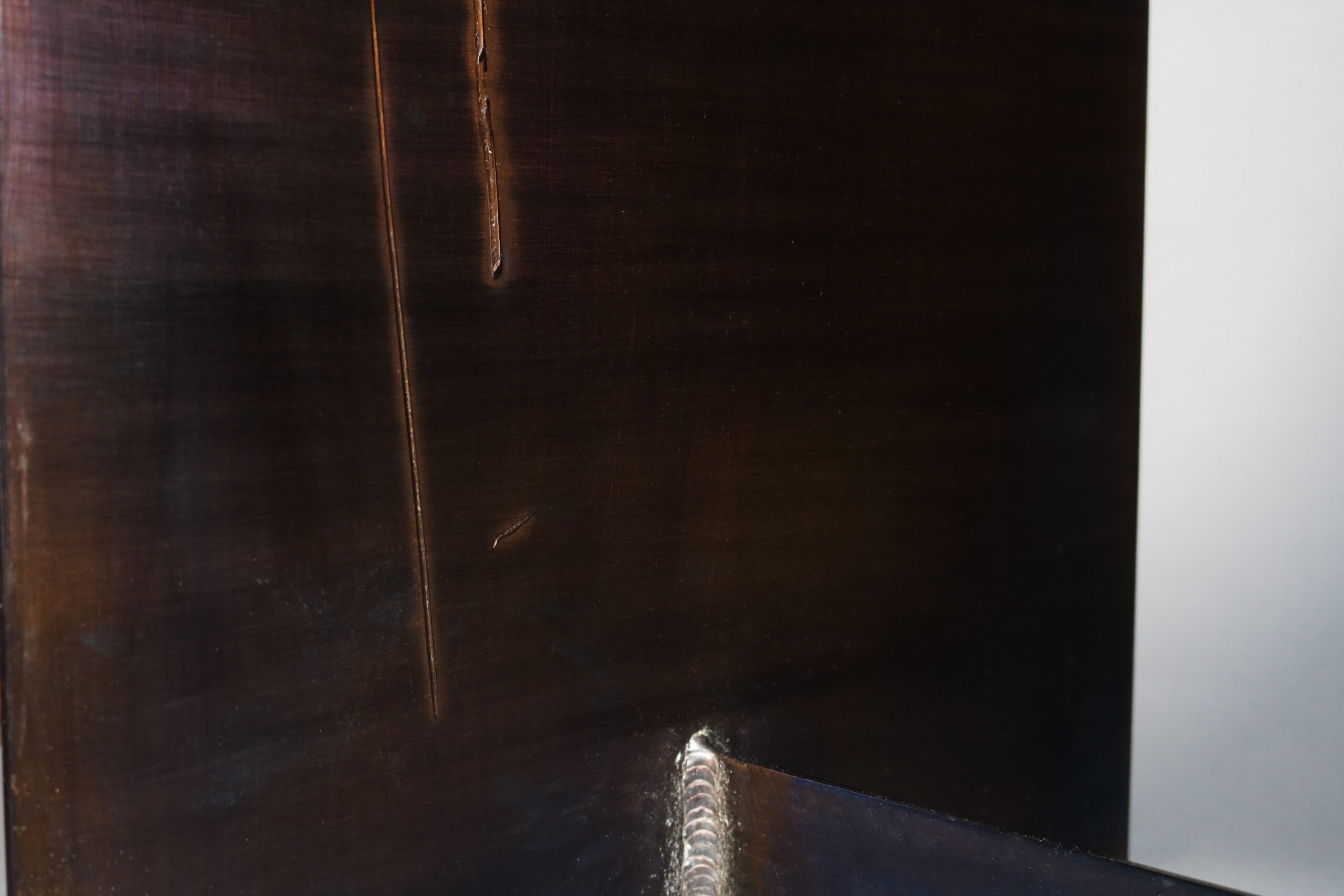
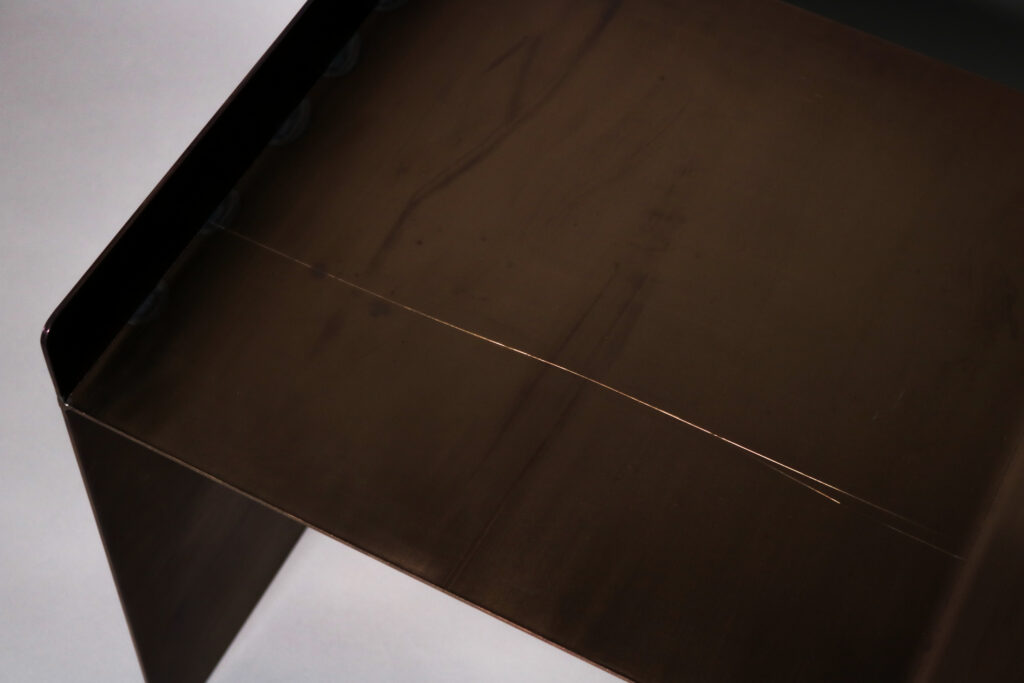
The time I spent making these forms is different from the time that will be spent with them from here on out. Time will pass, the metal series will remain, relatively the same. They will far outlast their inception, they will far outlast me.
Process
Below is a collection of some of the equipment and tools I used in the process of making these forms. The most used were the hydraulic shears (top left), MIG welder (top right) and grinder (bottom, second from the right). On the bottom right is the kiln used to heat treat the fourth form, that colour would have been impossible without the even heat of a large kiln like that.
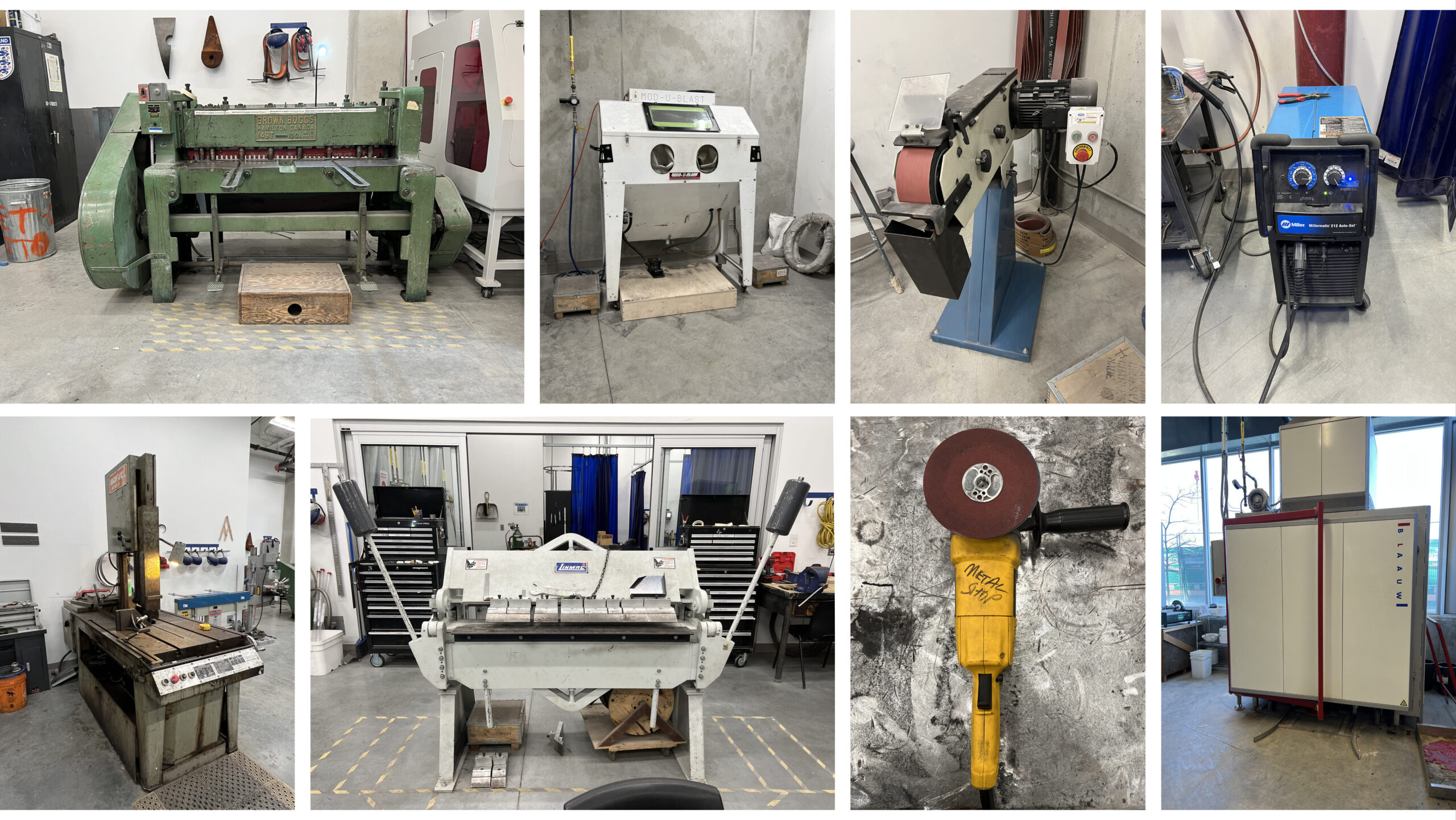
This is a gallery of in progress pieces, showing the process of making these pieces. It starts by measuring out material, cutting it with the shears, bending pieces depending on the design. If the piece requires it that is followed by belt sanding, to either smooth out a circle or round edges on a sharp piece. Following sanding I hand filed each piece to removed sharp edges and burrs before welding the pieces into their full form. Welding took place on the surfaces and on the bottom to get the forms as strong as possible. Surface welds were ground down smooth, and if there were holes in the welds I would go back and fill them then grind them again. This processes was repeated a few times to get the surface perfect. To finish them all I hand sanded each piece with various grits of sandpaper until a desired finish was achieved. Forms No. 2 and No. 4 were of course heat treated as mentioned above. When all the pieces were finished being made they were sealed with a natural paste wax to protect them from damage and increase their longevity.
